Located in the heart of the Middle East, Jordan is a bite-sized country which packs a serious punch. It is home to a huge variety of landscapes and cultural sites including stunning desert scenery, an abundance of historical treasures and the lowest point on Earth.
In one visit you can tick off multiple bucket list experiences such as visiting the ancient city of Petra, floating in the Dead Sea and hiking through the remote Wadi Rum desert. And don’t even get me started on the friendly locals and delicious food!
My time in Jordan was nothing short of incredible, this country has taken a special place in my heart and I would go as far as saying it is one of my favourite destinations in the world. I hope that this in depth Jordan travel guide and itinerary gives you all the information you need to have an action packed and immersive trip to Jordan. Happy planning!
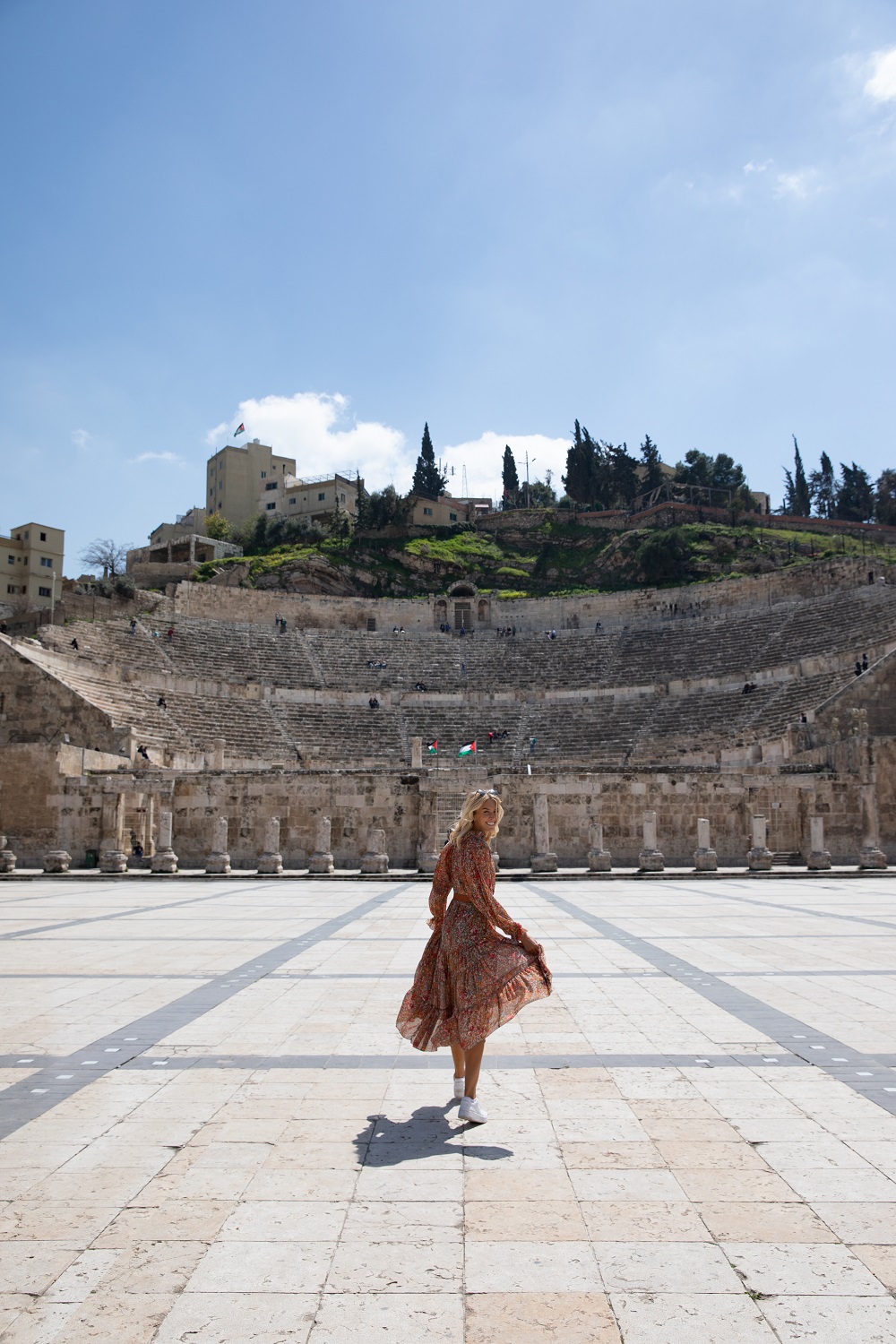
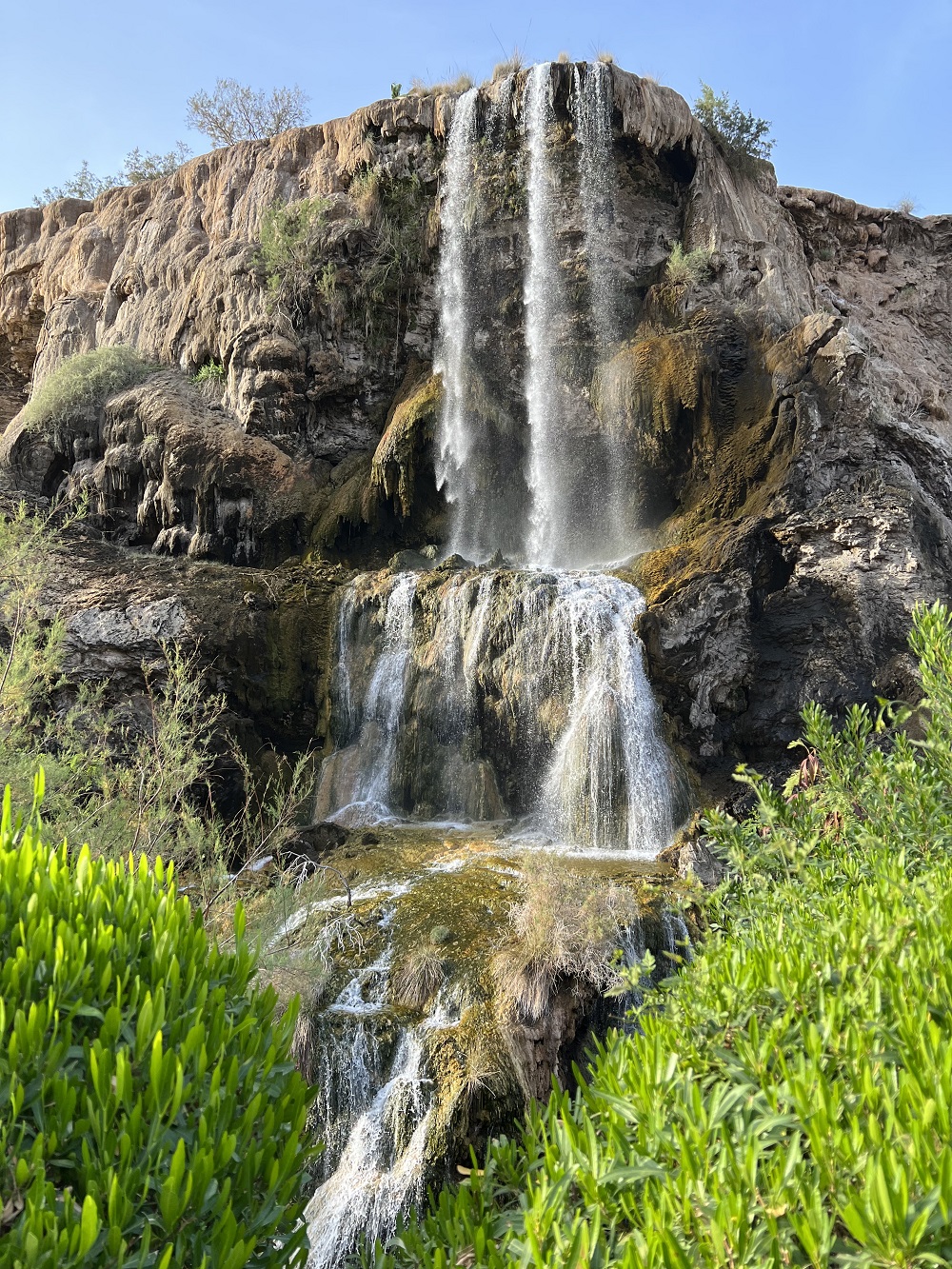
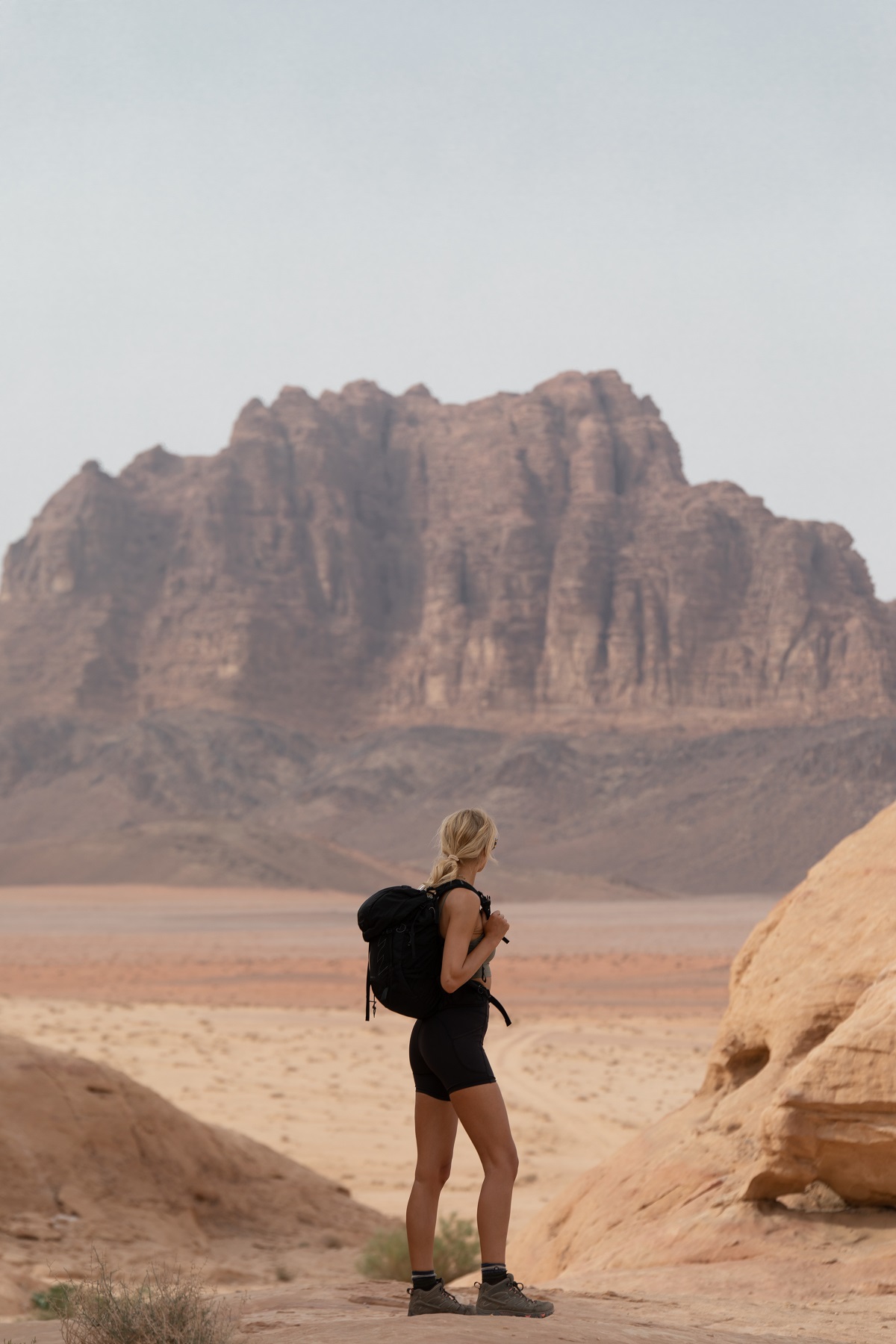
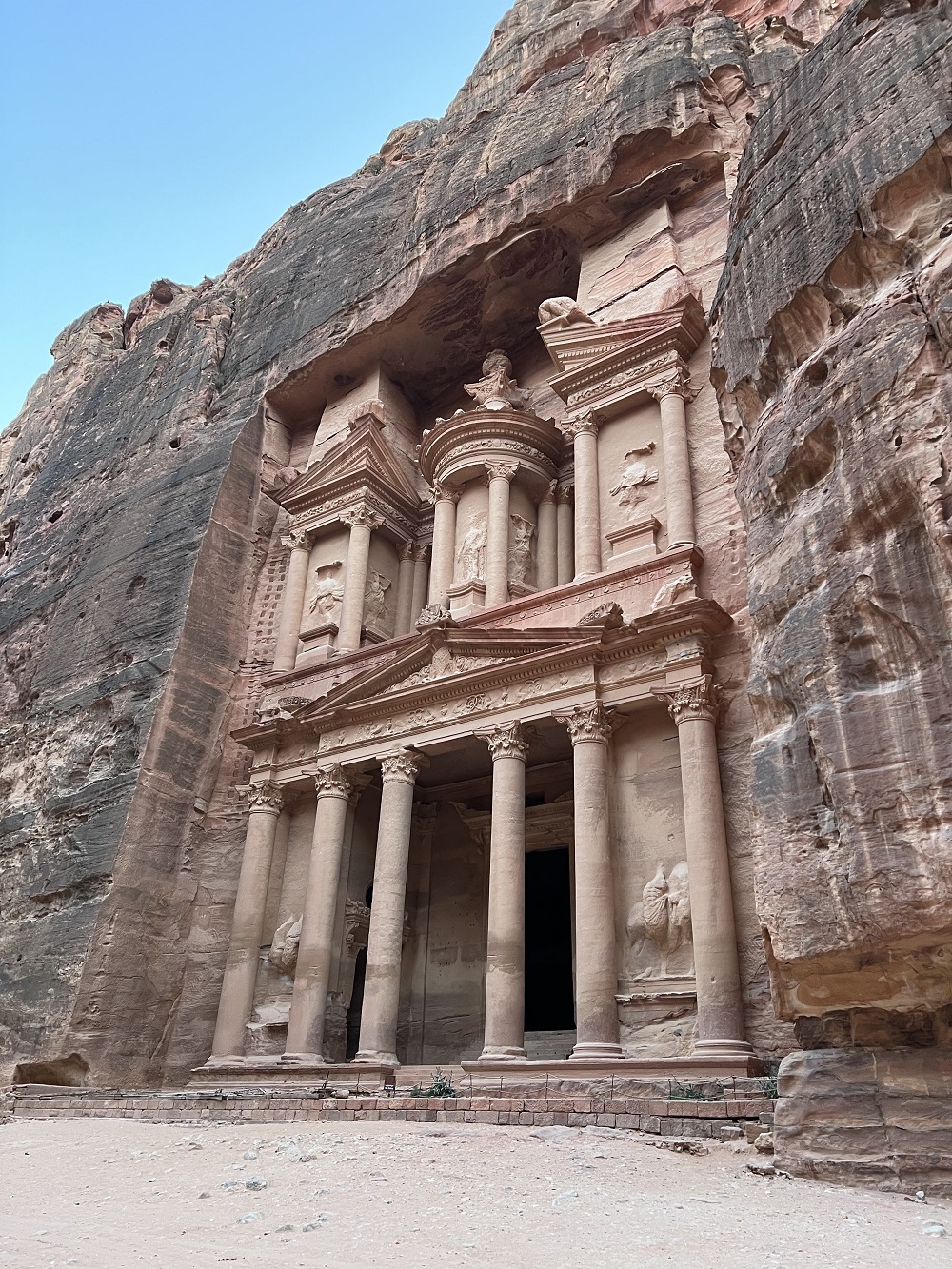
The Practicalities:
How To Get There?
There are regular flights from the UK to Amman, the capital of Jordan, a great place from which to start your trip around the country.
How Long To Go For?
Jordan is a small country so the highlights could be covered in a 5-7 day trip. However, if you don’t want to be rushing then I highly recommend 10 days to get the full Jordanian experience.
When To Visit?
March to May is the ideal time to travel to Jordan if you’re going to be hiking, as wildflowers will be starting to bloom across the Northern landscapes. If you want to go later in the year, October is a great option, as it is after the summer heat but before the chilly winter weather hits.
How To Get Around?
The public transport system in Jordan is very limited, so I highly recommend using a rental car to get around the country. If you don’t feel comfortable on the roads you can hire a private driver, but this comes at a large expense.
Is It Expensive?
A trip to Jordan can be adapted to most budgets. If you stay in low cost hotels and enjoy food from local cafes you can save some serious cash – our lunch most days was about £1-2 for a simple falafel wrap. However, if you choose to dine at more luxurious tourist restaurants you will be paying higher prices. Beware that as it is a muslim country, alcohol is very expensive in Jordan.
Is it Safe?
I felt extremely safe the whole time I was exploring Jordan. The people are some of the most welcoming and helpful I have met on my travels. Just exercise common sense and be vigilant, as you would be travelling anywhere in the world.
What Should I Wear?
Jordan is a conservative country so dress appropriately. As a woman, when you’re in towns, villages or busy places it is respectful to cover your knees, shoulders, back and chest. However, if you’re out hiking in the wilderness away from the locals then it is acceptable to wear shorts and sleeveless tops due to the heat.
How Can I Travel Responsibly?
Water is extremely scarce in Jordan, ensure you take short showers and turn off taps while brushing your teeth. Eat at locally owned restaurants and enjoy Arabic cuisine. Reduce your plastic consumption as much as possible as there is no recycling system at all in Jordan. Do not ride camels or donkeys, they are often abused.
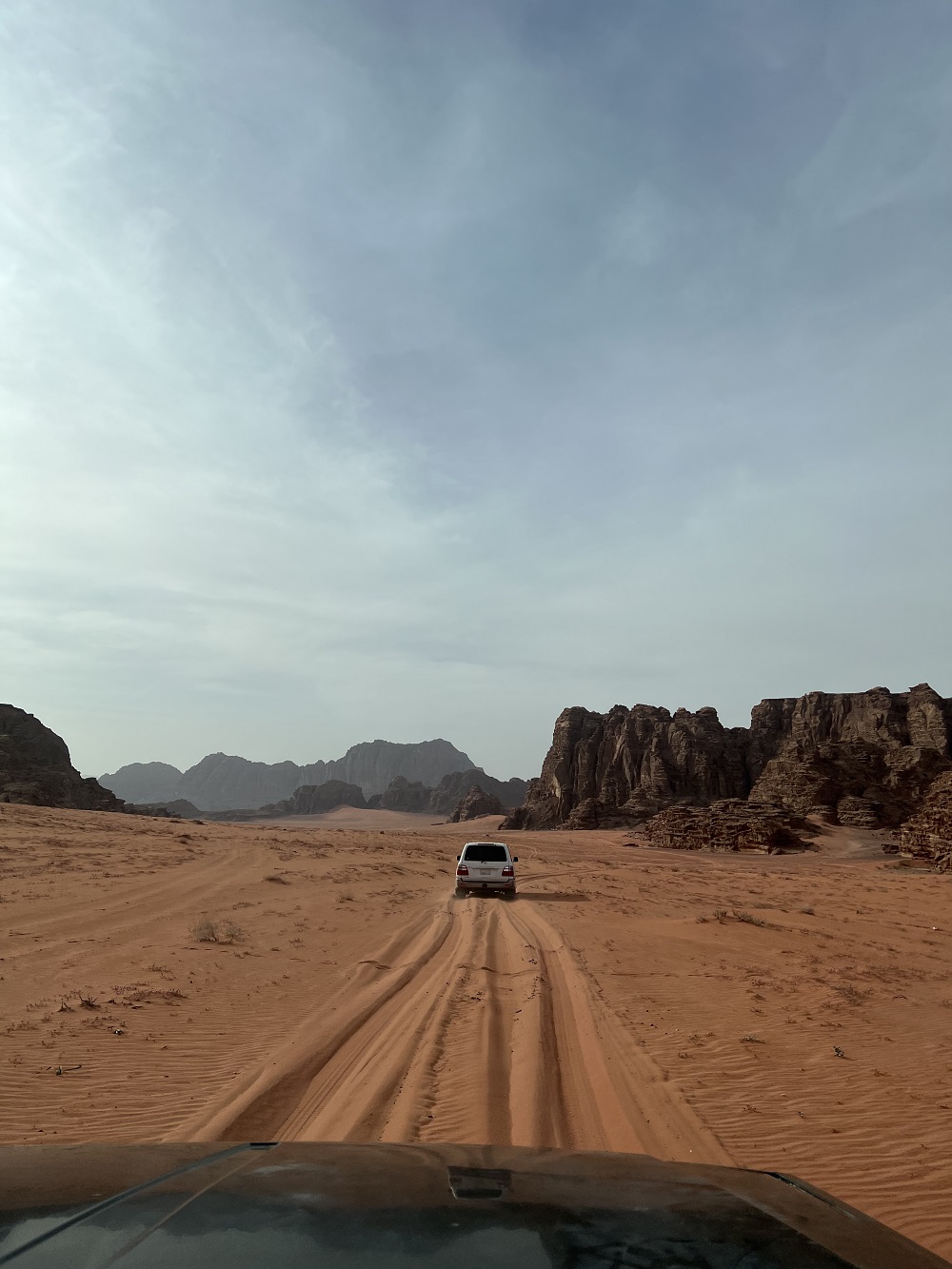
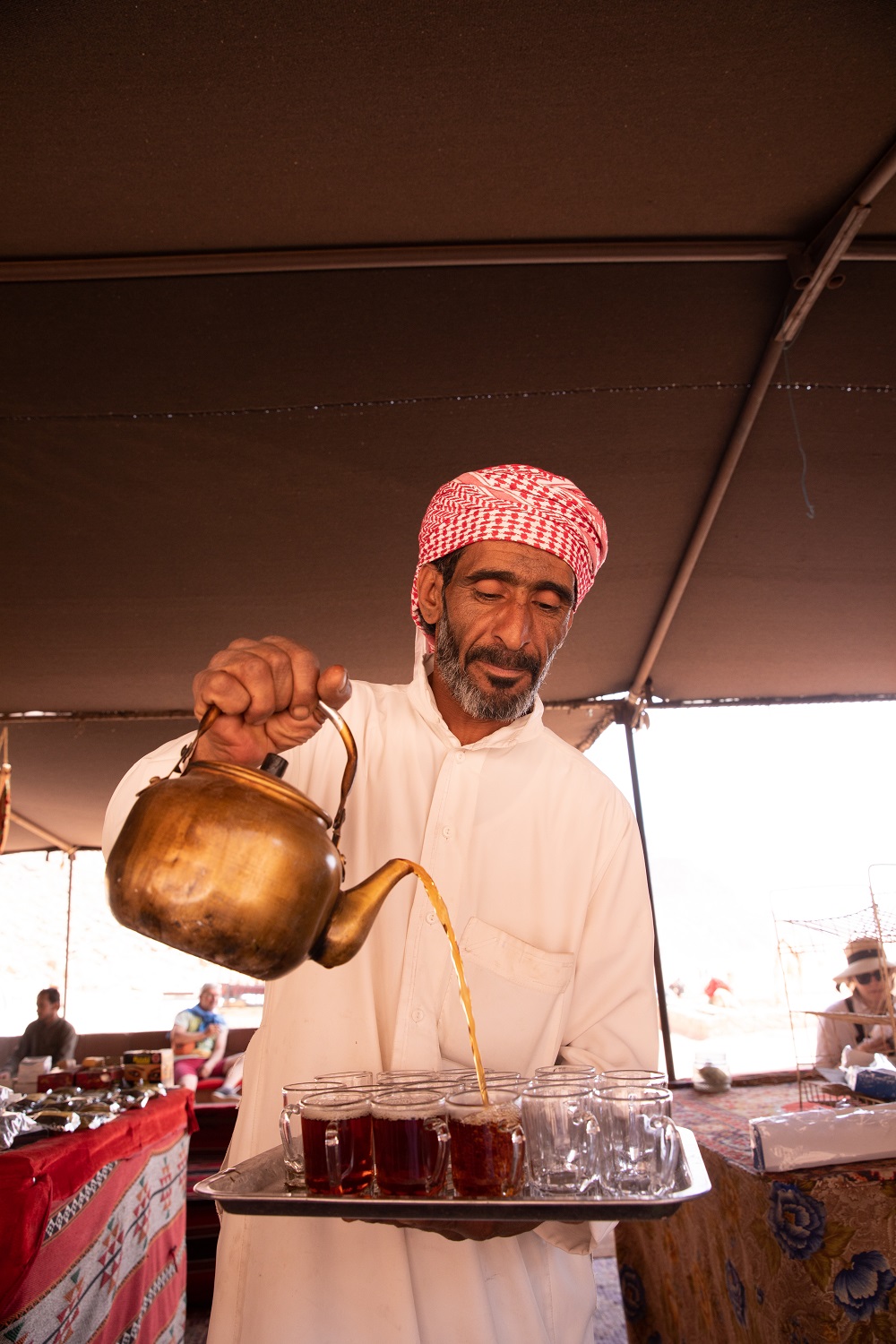
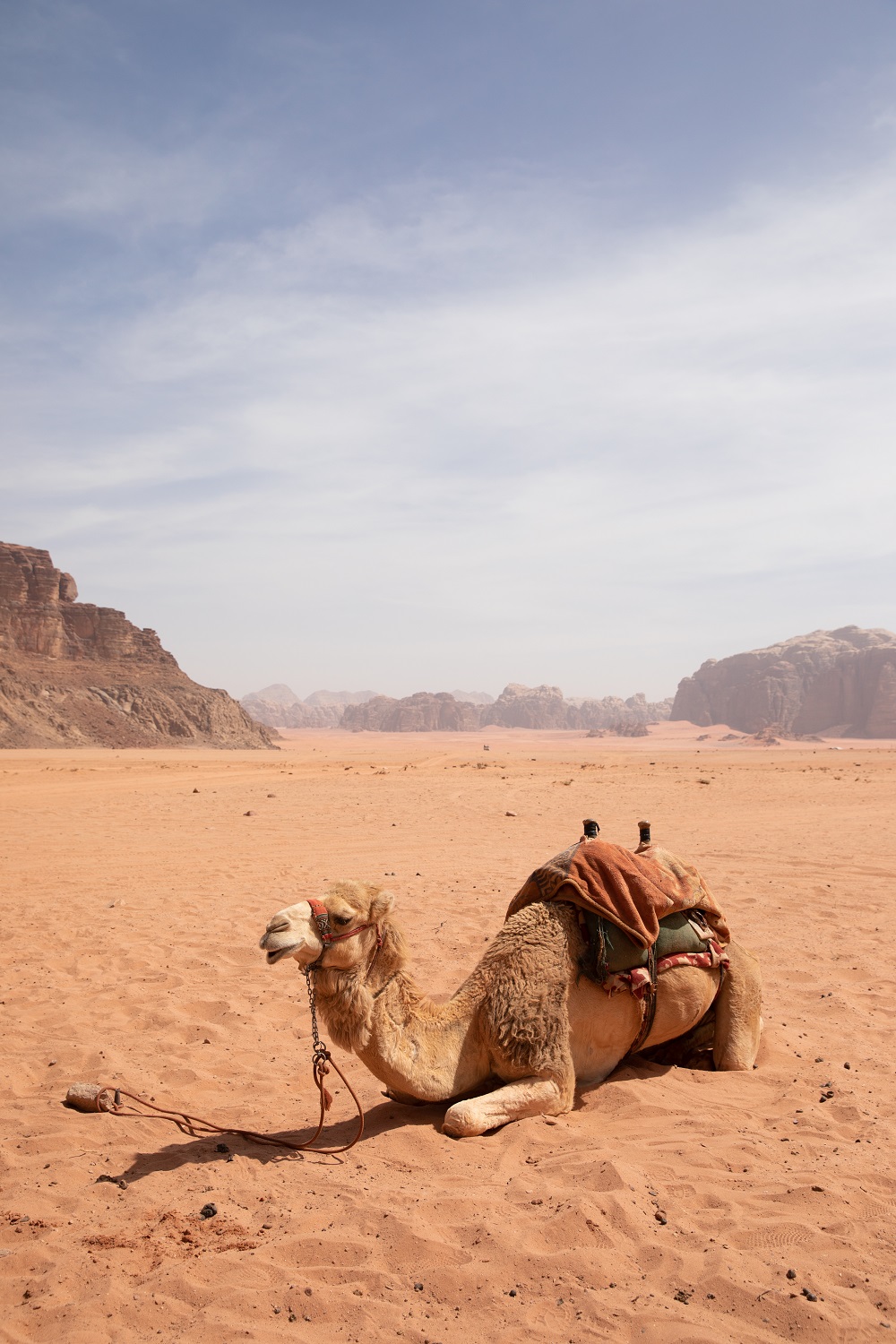
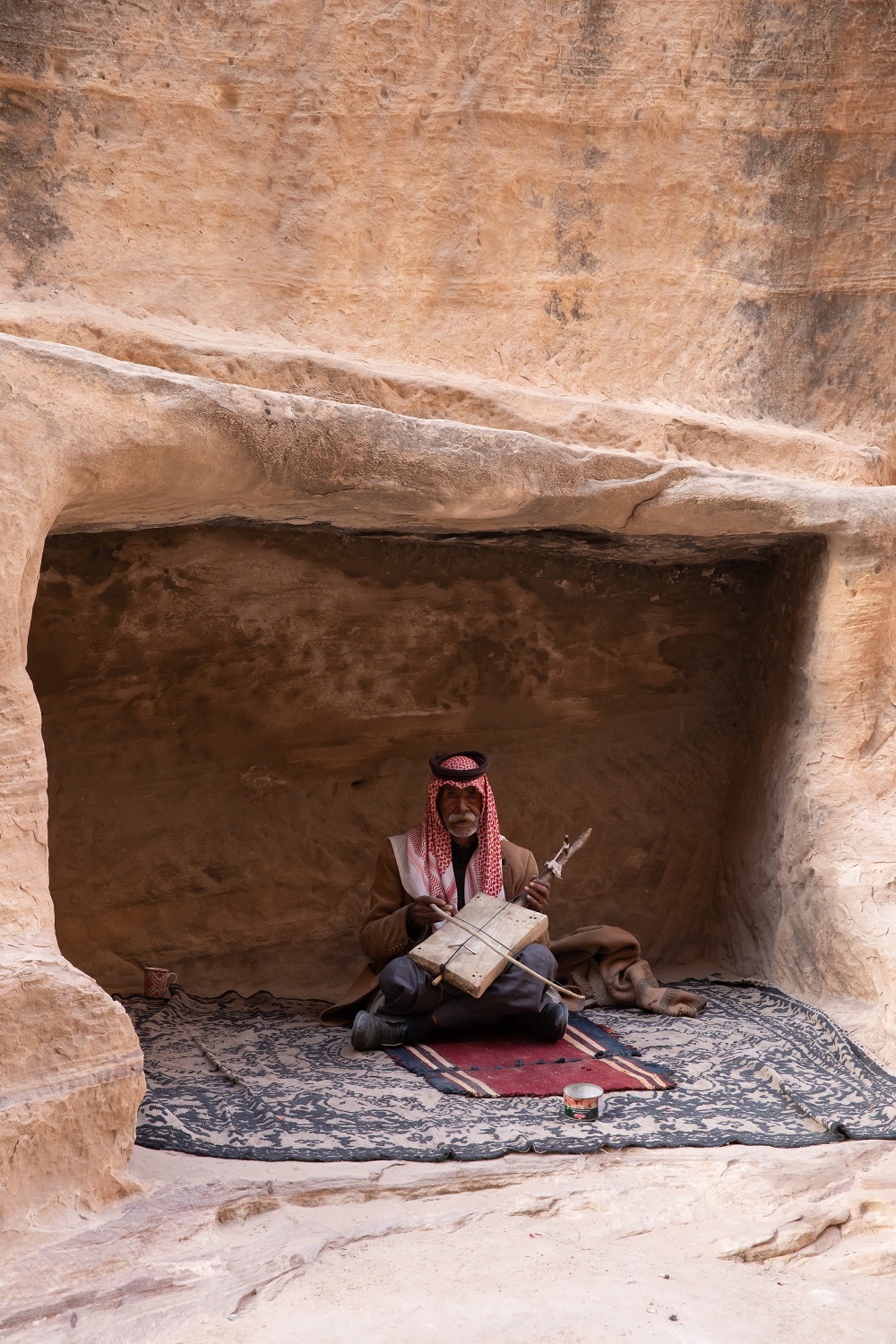
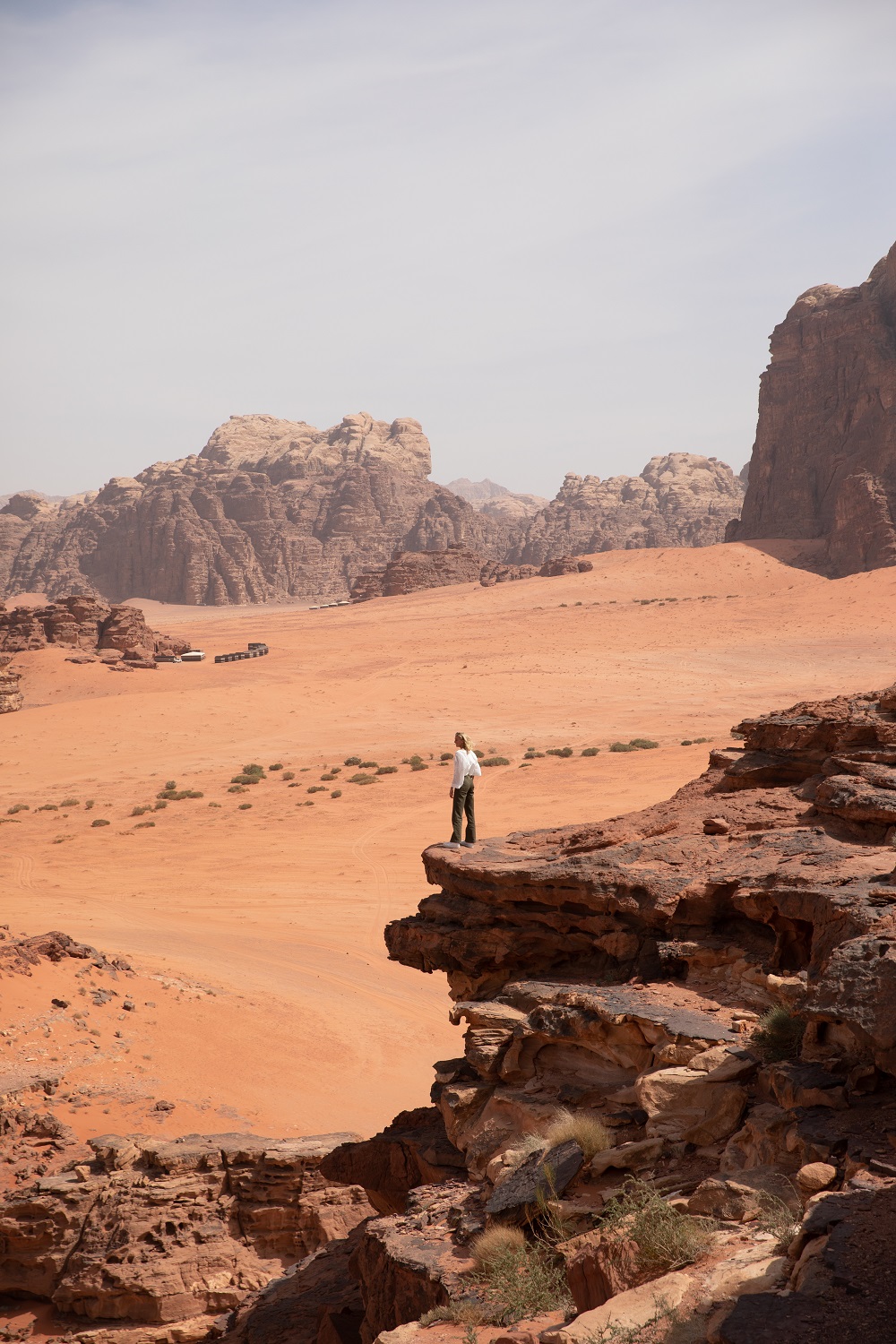
Travel Tips:
- Language: The language is Arabic but most locals you encounter will speak some basic English.
- Currency: The local currency is Jordanian Dinar, ensure you bring cash as well as cards.
- Plug sockets: These vary across the country, so it is wise to bring a universal converter.
- Visa: UK citizens must purchase a tourist visa on arrival at the airport in Jordan (for 40 dinar).
- Jordan Pass: If you plan on visiting multiple attractions in Jordan then it may make sense to purchase the Jordan Pass, which also absorbs the cost of your tourist visa.
- Ramadan: Take care when travelling during Ramadan as this means many local cafes and restaurants won’t be open during daylight hours.
- Phone Data: Purchasing a SIM card at the airport on arrival is a great idea if you want to be able to make local calls and use data. Zain is the main provider with the best coverage.
- Tipping: Tipping is a big part of the service culture in Jordan, be sure to carry cash for this.
Suggested 10 Day Jordan Travel Guide and Itinerary:
Day 1: Amman
Day 2: Day Trip From Amman To Jerash
Day 3: The Dead Sea & Ma’In Springs
Day 4: Dana
Day 5: Dana
Day 6: Petra
Day 7: Petra
Day 8: Wadi Rum
Day 9: Wadi Rum
Day 10: Travel back to Amman
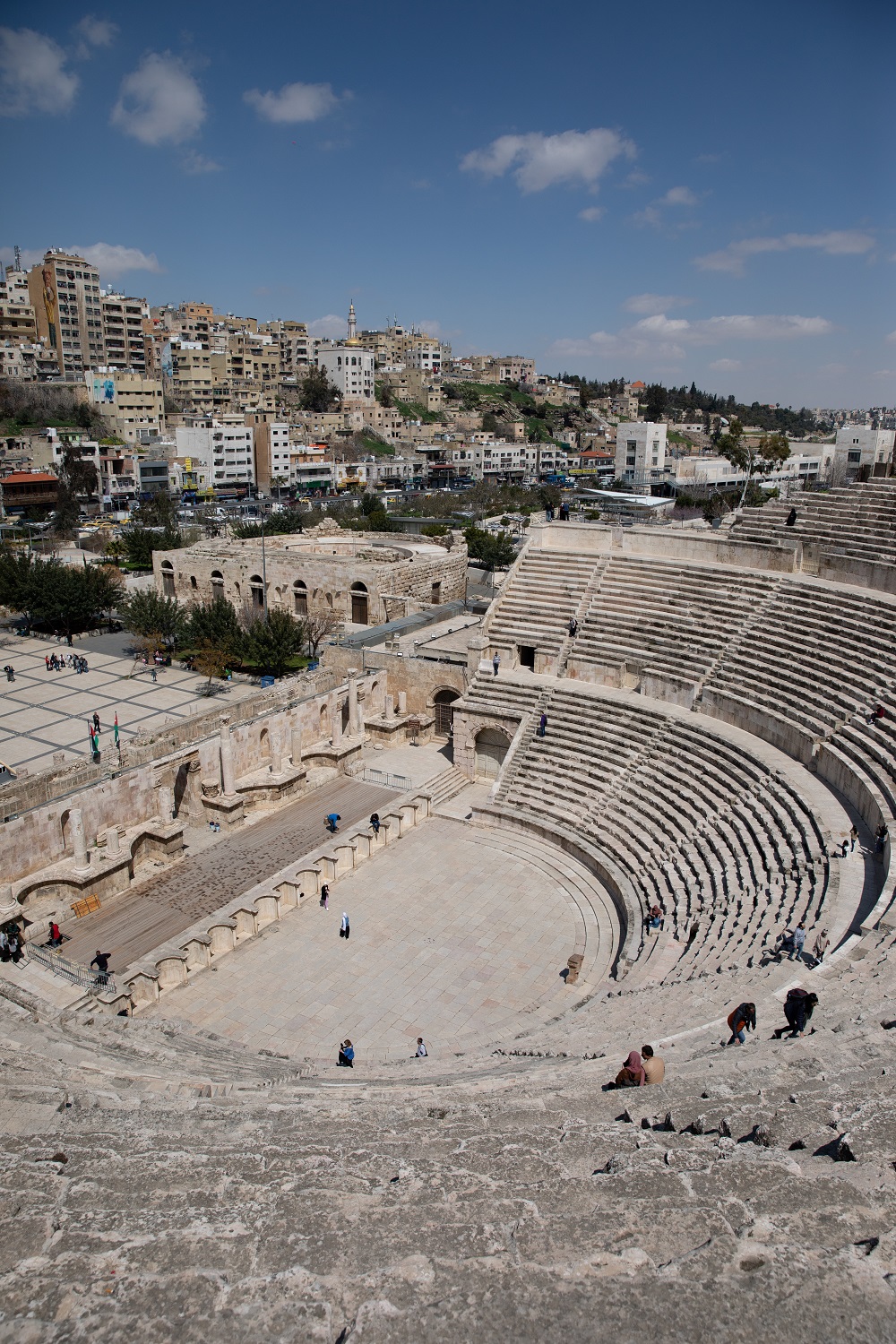
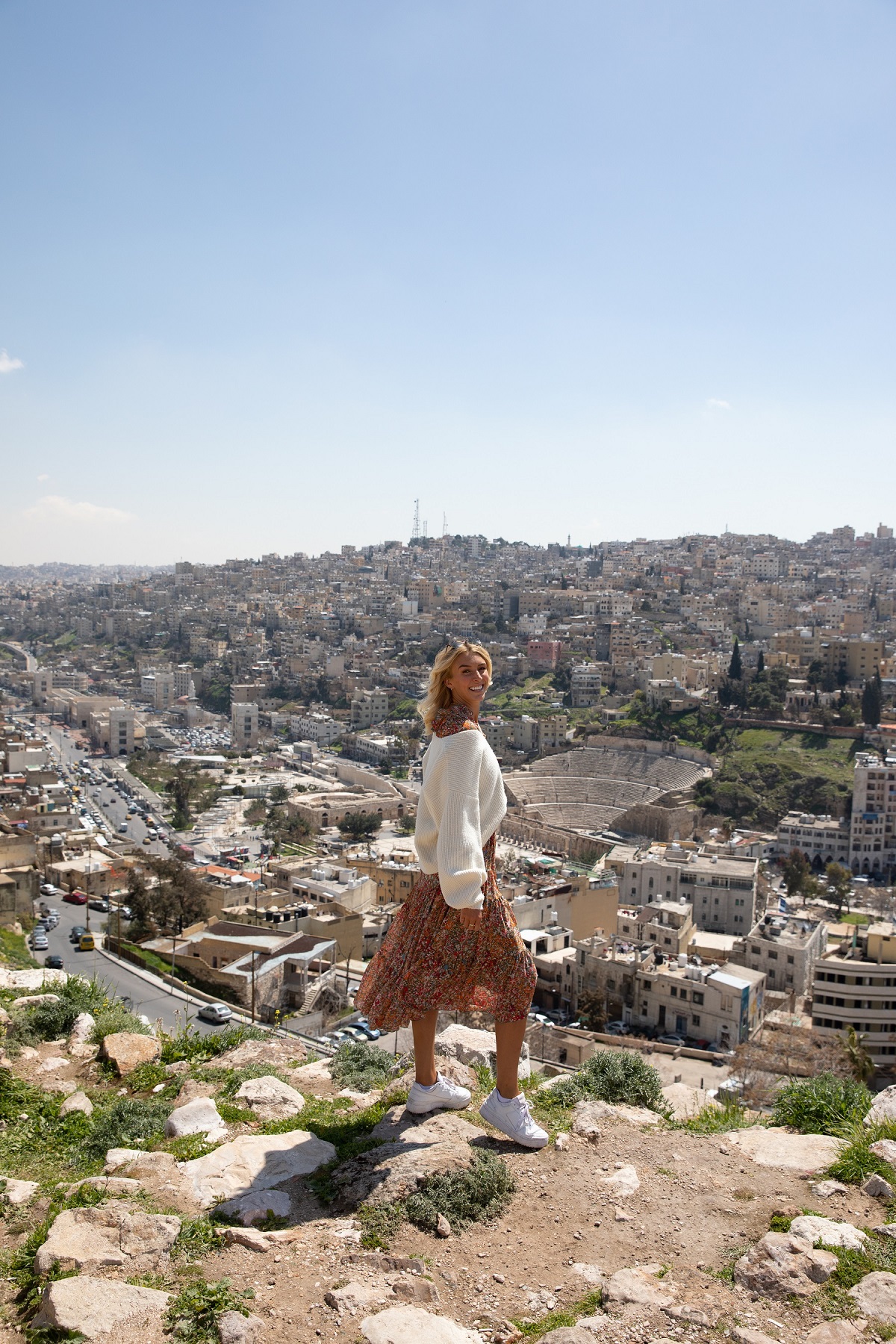
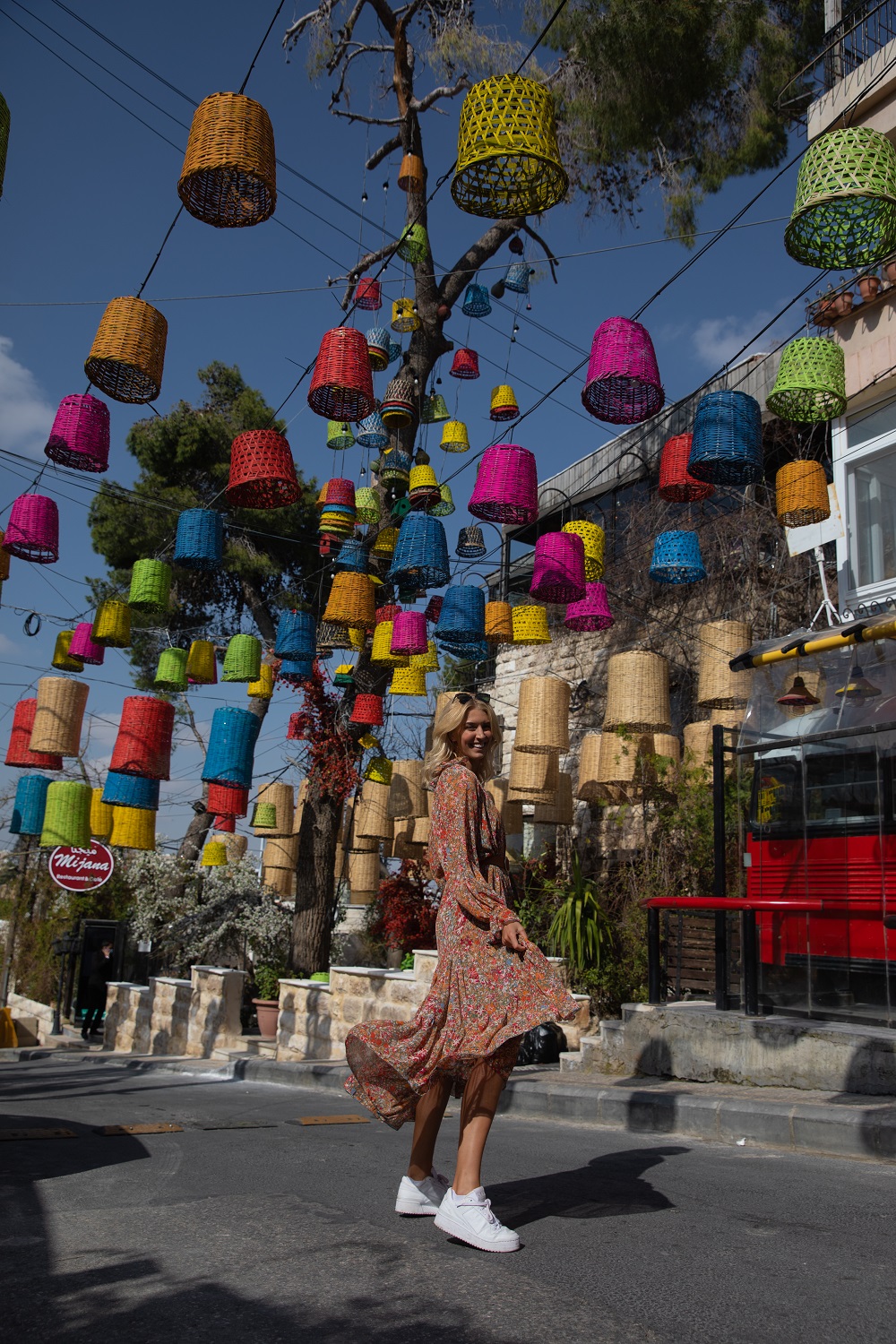
What To See & Do:
Amman
It is well worth spending a day in the capital city of Jordan. It is busy, bustling and a little chaotic but that’s why I loved it. My time there felt authentic and immersive. Don’t miss these sights:
- The Citadel. Located on top of Jabal Al Qala’a hill, this historic site also offers great views over the city. Hire a local guide on arrival to get the most out of the experience.
- The Roman Amphitheatre. With a seating capacity of 6000, don’t miss this impressive ancient theatre. Climb up to the top for incredible views over the region.
- Souq Alias Market. Explore the city’s souk for an assault on the senses with smells, colours and noises galore. You could get lost for hours in this photographer’s haven (be sure to ask permission before you take any photos).
- King Abdullah Mosque. Step inside this gigantic and ornate mosque known for its bright blue dome, it is so large it can house up to 7,000 worshippers at a time.
- Al Balad. Otherwise known as downtown Amman, this is the perfect place to wander if you want an authentic Amman experience and to mingle with the locals.
- The Local Food. Our favourite spots for high quality Arabic dishes were Shams el Balad and Fakhreldin Restaurant. I also recommend visiting Wild Jordan for organic local meals and stopping by Habibah to try their famous Knafeh dessert.
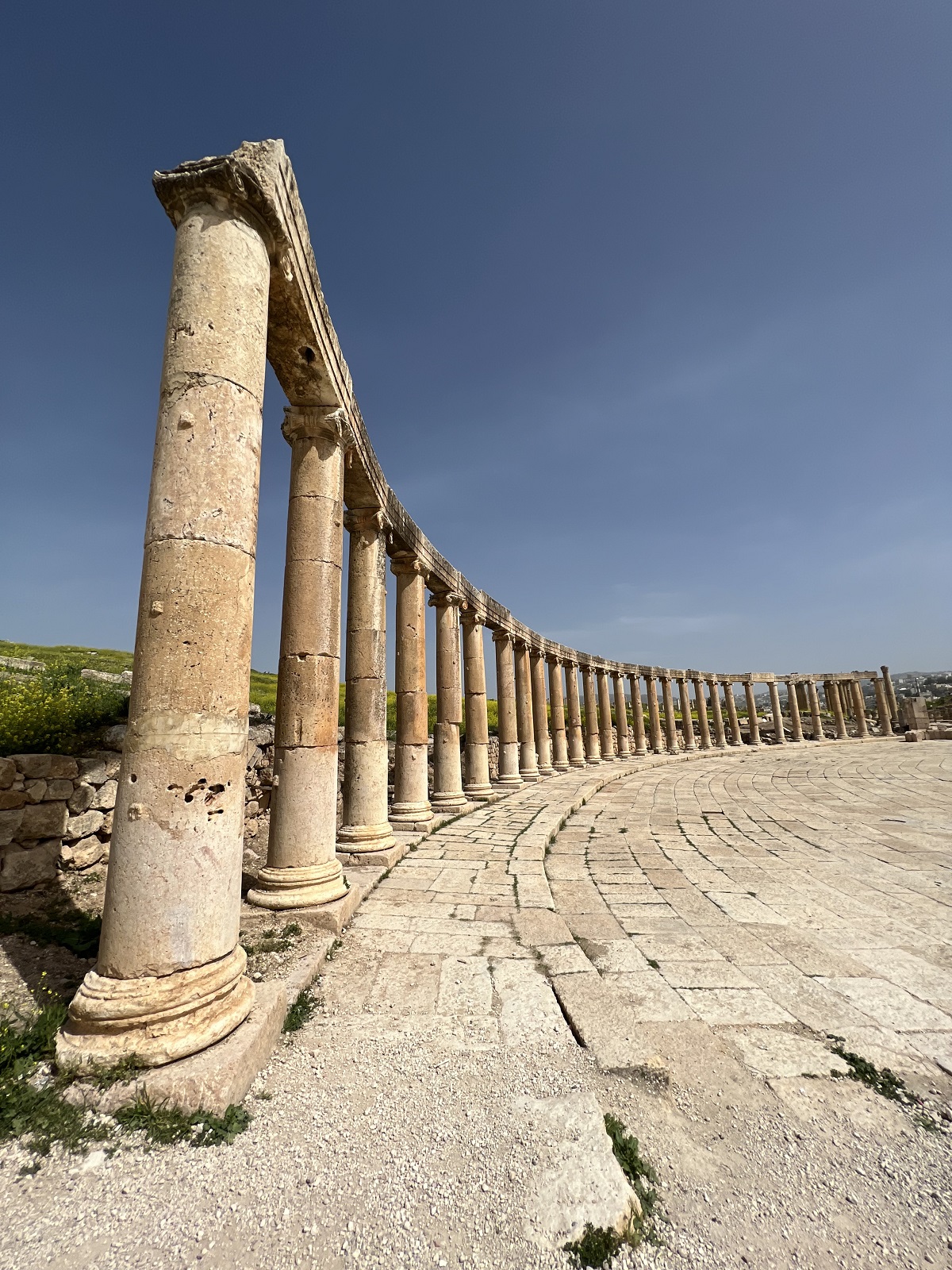
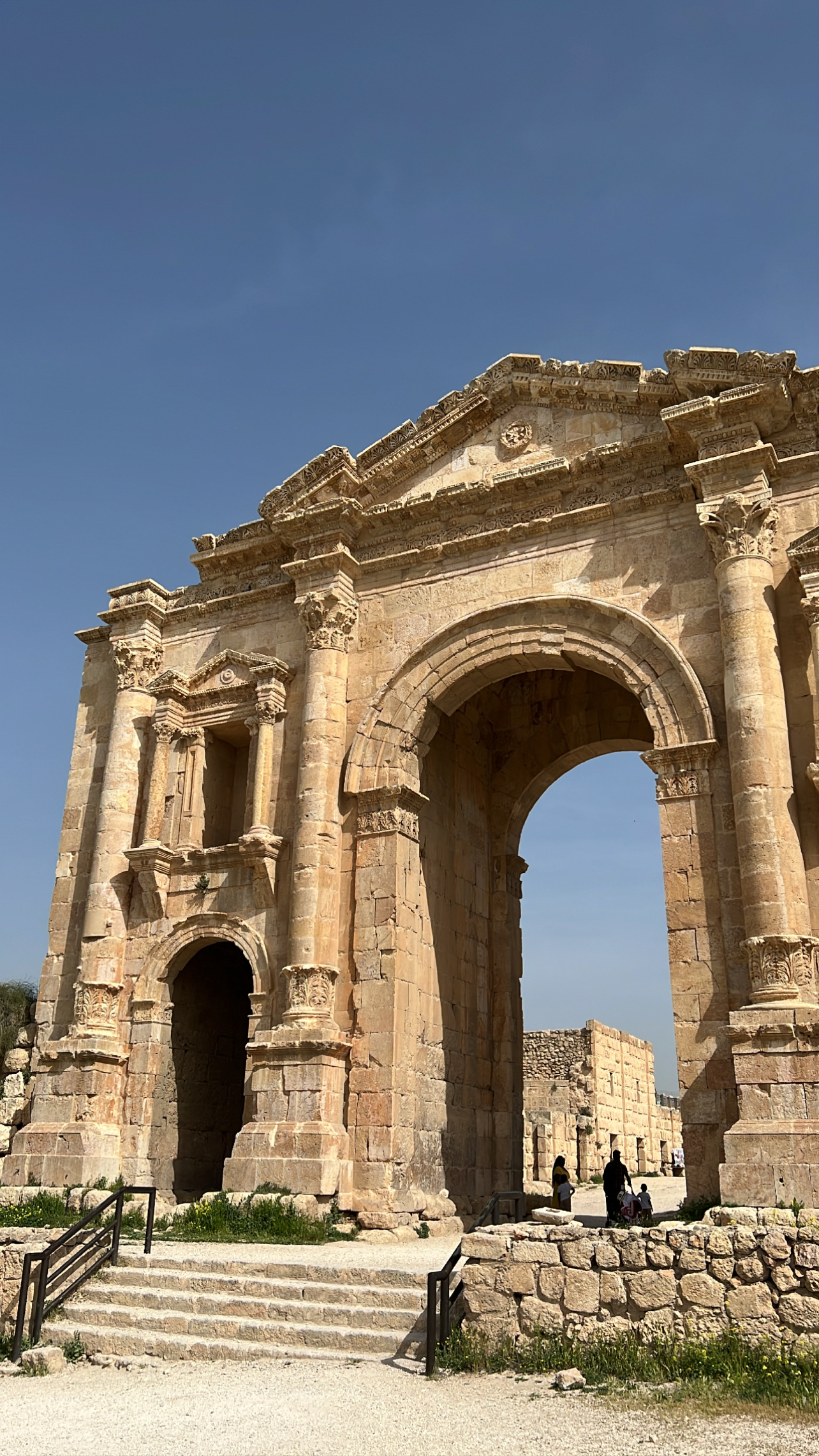
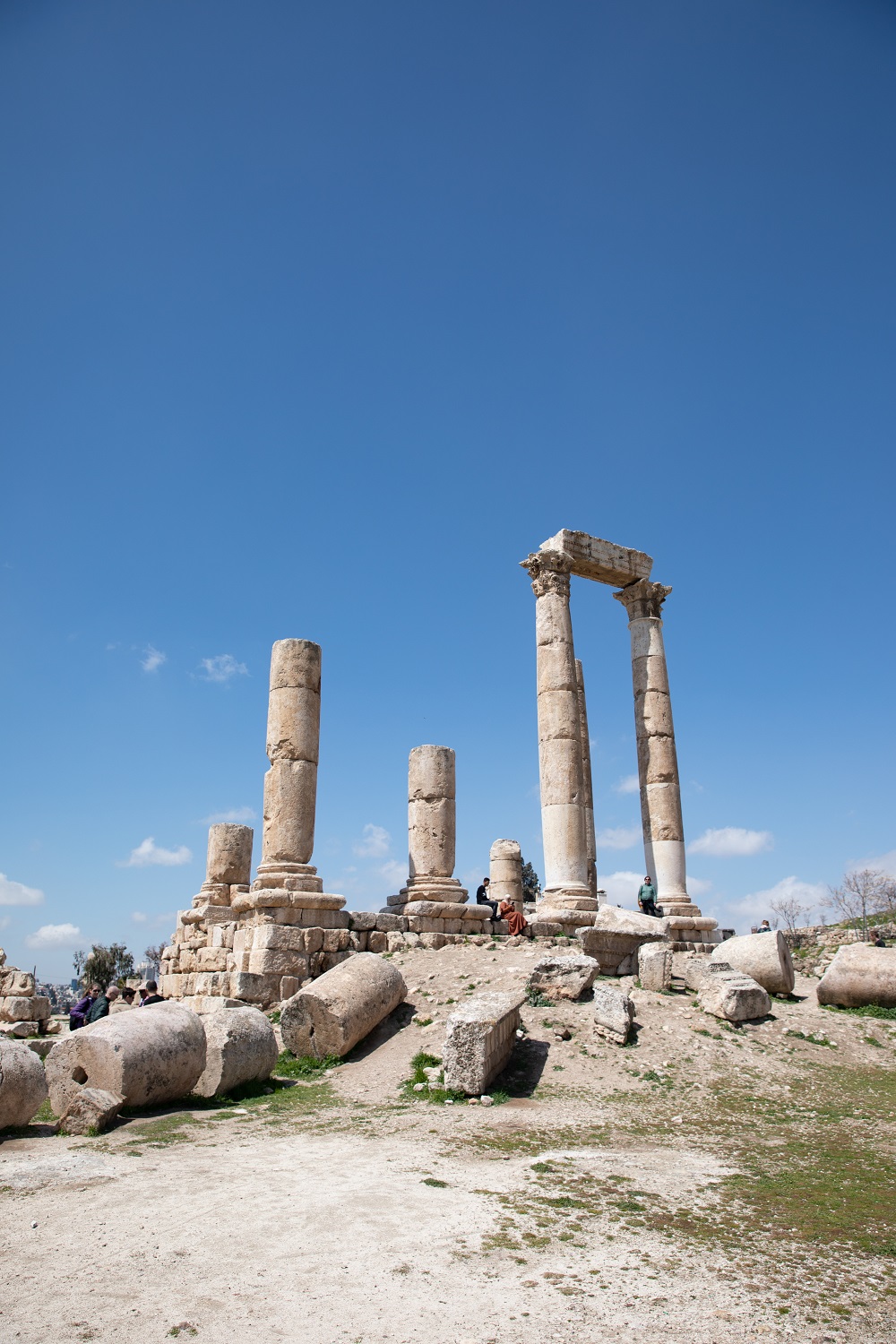
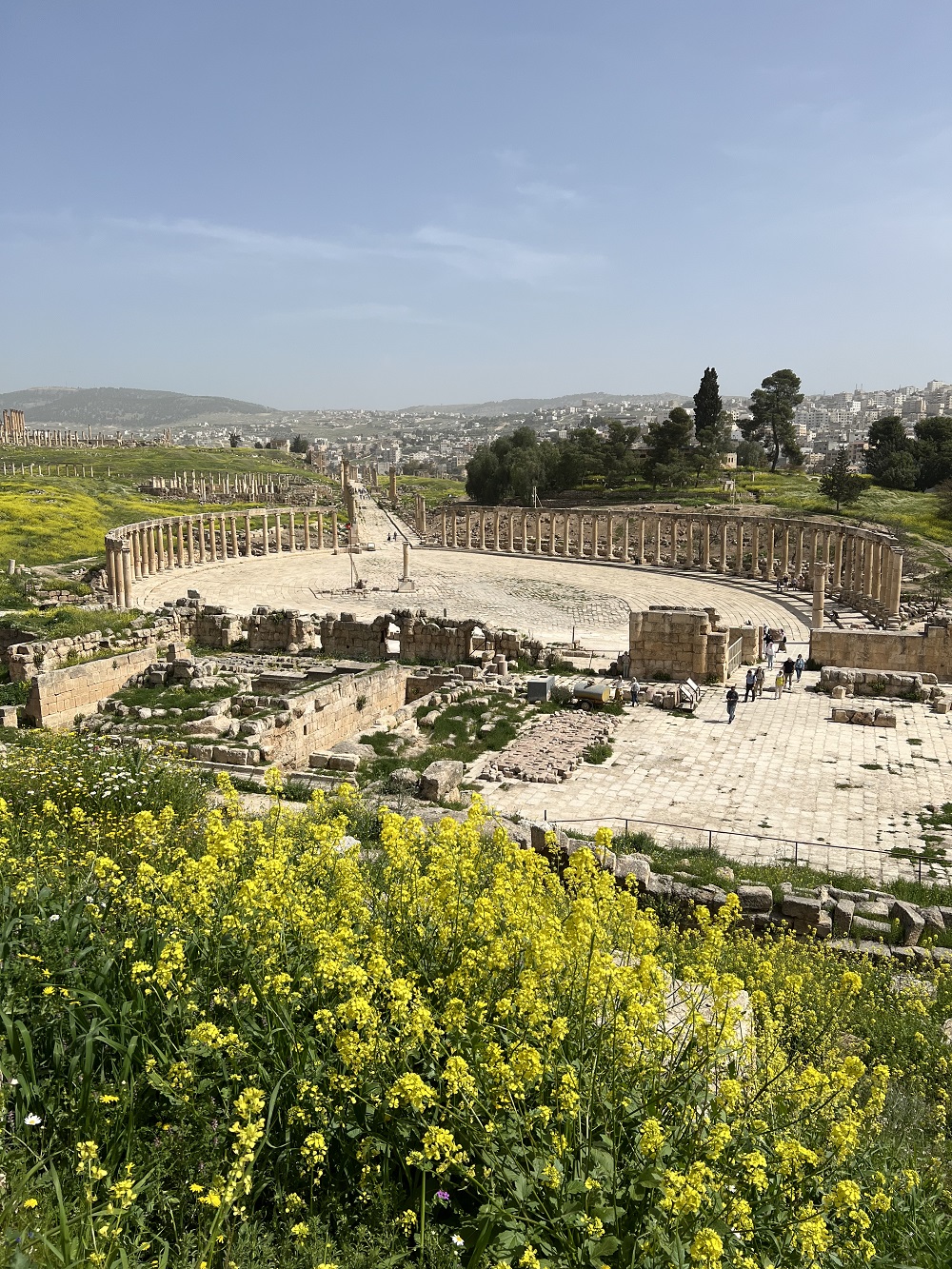
Jerash
The ancient Roman city of Jerash is located a short drive from Amman (around 1 hour). Often referred to as the “Pompeii of the East” it is the second most visited tourist destination in Jordan, and for good reason. It is home to one the best preserved sites of Roman architecture in the world. The area is covered in archways, columns, theatres and churches with highlights including the Oval Forum, Hadrian’s Arch and Zeus Temple. I highly recommend hiring a guide, getting an information leaflet or doing some simple research so you can understand the rich history of Jerash. If you’re peckish after exploring the ruins, a great place for lunch nearby is Beit Khairat Souf. A environmentally focused women’s cooperative which has a cafe as well as a shop which sells handmade products.
Tip: During the spring months, the ruins are covered in beautiful bright yellow flowers. If you have time, make a second stop and visit the nearby hilltop town of Ajloun and visit its beautiful castle.
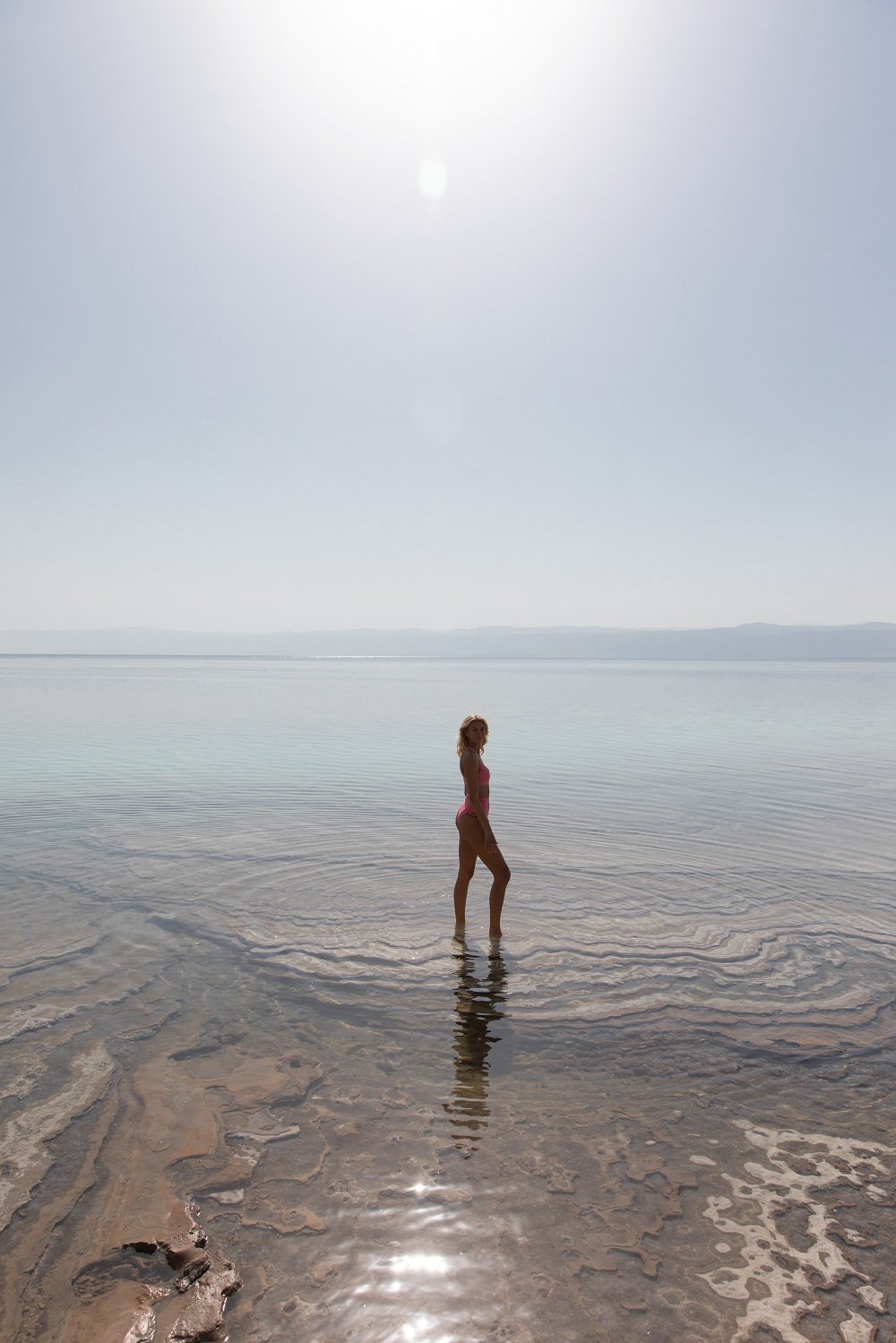
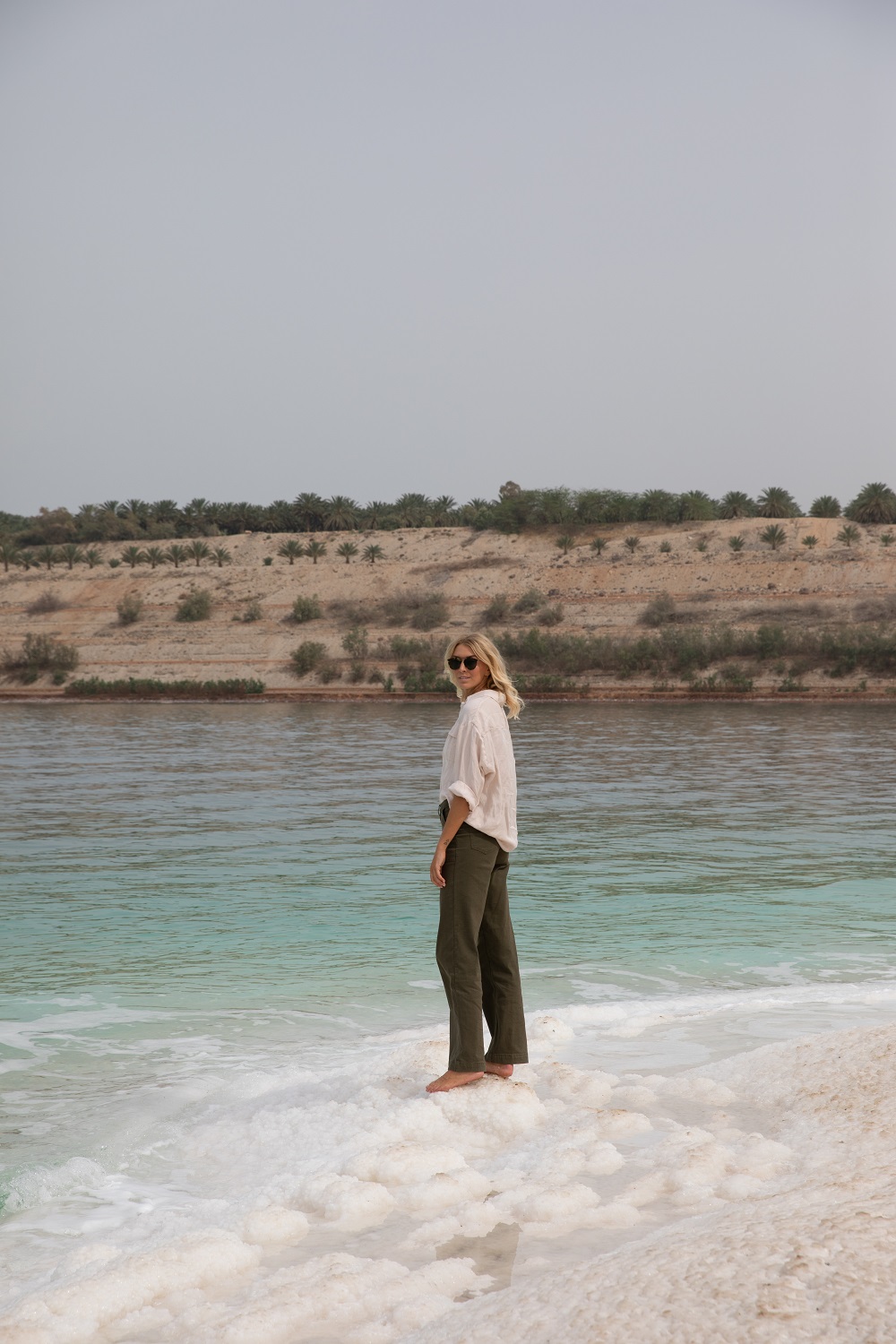
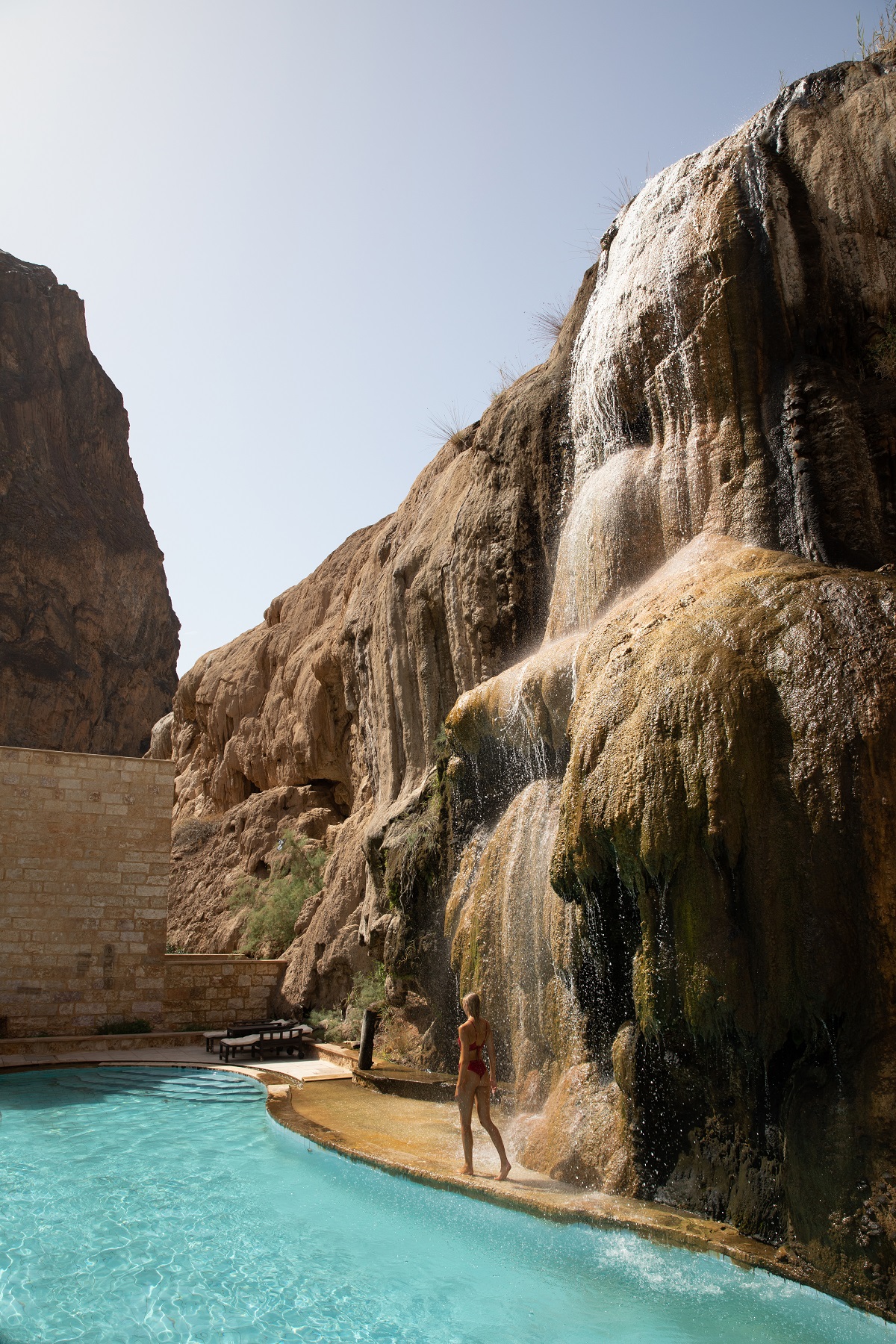
The Dead Sea
The Dead Sea is a salt lake located at the lowest point on earth (430m below sea level) with waters almost 10 times saltier than the ocean. This allows you to have the surreal experience of floating effortlessly on the surface! To access the sea, you can stay overnight at one of the hotels along the water’s edge (such as The Dead Sea Spa Hotel, Kempinski or The Marriott). Each of these has their own private area along the shoreline for guest use. However if you’re just passing by the Dead Sea for the day then there a couple of options of where to swim:
- Herodus (Zara) Spring – a free beach accessible by taking a short walk from the highway. There is even a small waterfall where you can rinse off the salt water after your dip.
- Amman Beach – a private beach club where for 25JD you have access to changing rooms, showers, bathrooms and a restaurant.
If you want a unique perspective of the Dead Sea then head to the Dead Sea Panoramic Complex which is located a short drive away from the shore and gives incredible views over the region.
Tips: Do not put your head underwater, the salt will burn your eyes. Do not put the dead sea mud on your face. Wash off the sea water in a shower right after you exit the sea, otherwise you will be left covered in white salty deposits.
Ma’In Springs
When visiting the Dead Sea, I recommend staying overnight at the nearby Ma’In Hot Springs Hotel. The resort is nestled in a mountainous canyon at 264 metres below sea level and is home to a series of hot spring waterfalls. Here you can enjoy bathing in the warm mineral-rich waters of the falls and lapping up their healing benefits. It is such a unique experience! The hotel itself is luxurious, with stunning views from the rooms and restaurants – plus guests get exclusive access to certain falls. However, if an overnight stay is out of your budget then you can pass through and purchase a 15JD one day pass to the public hot spring falls.
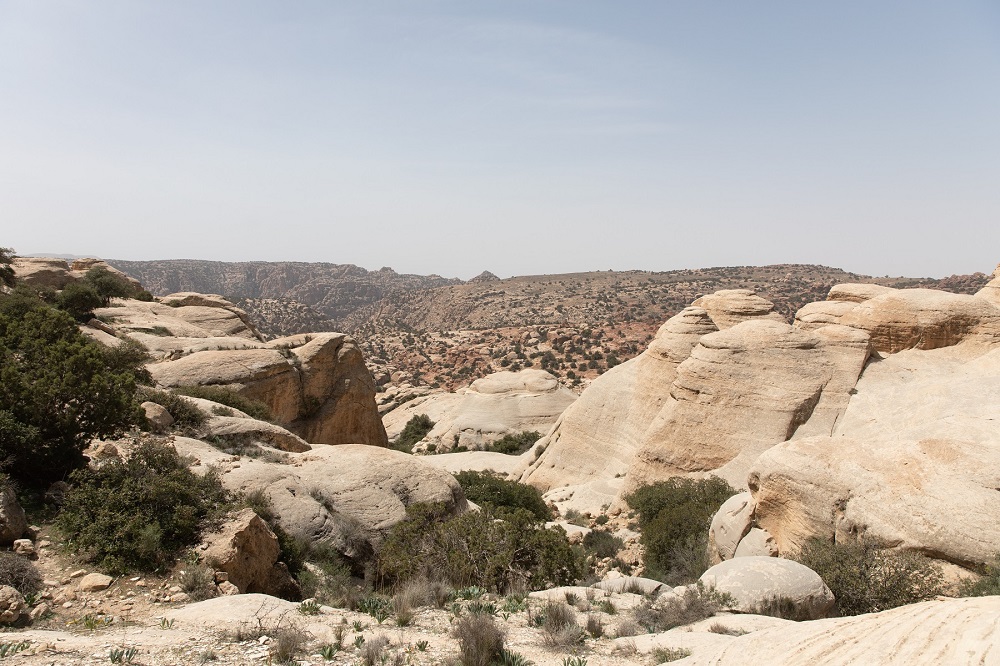
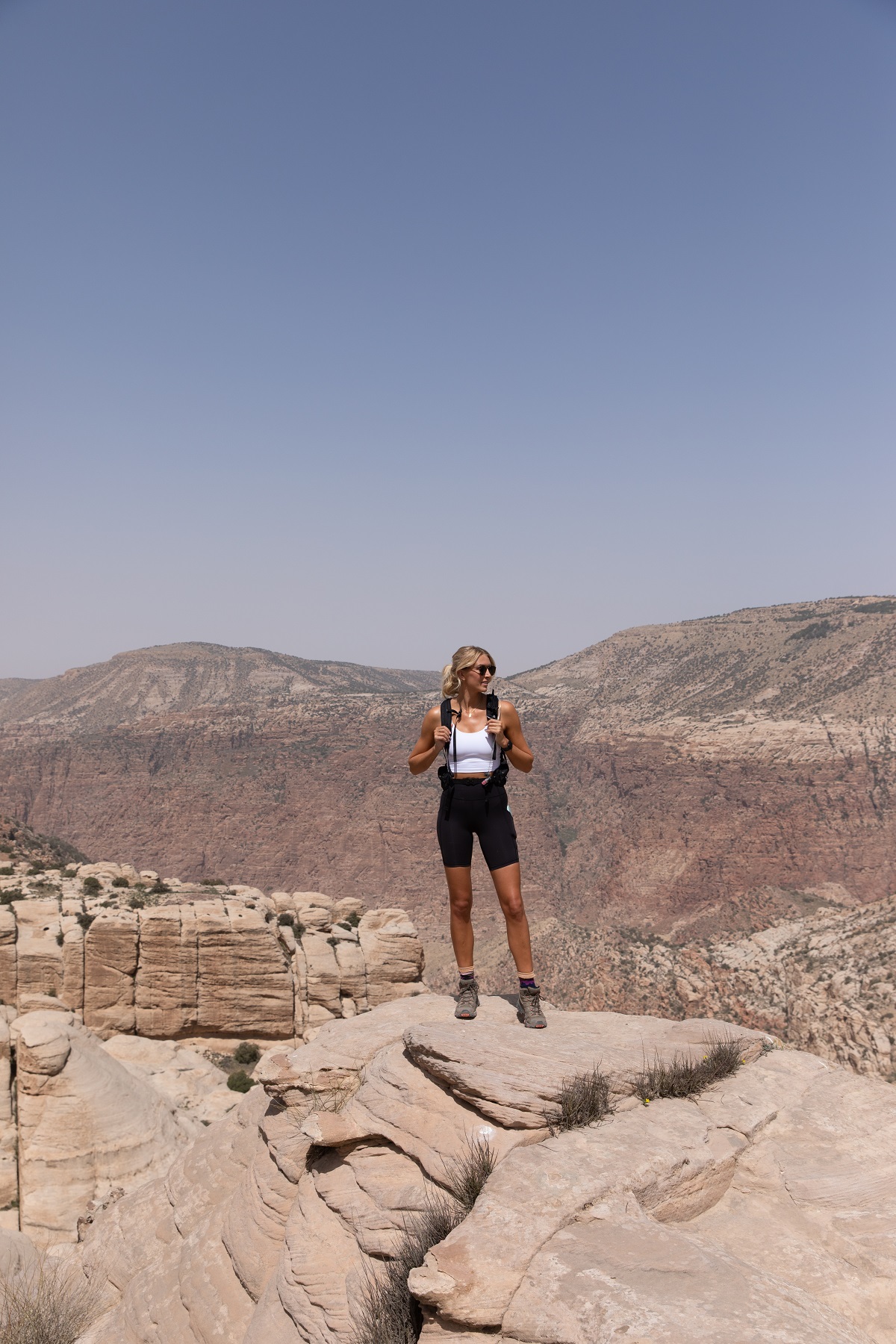
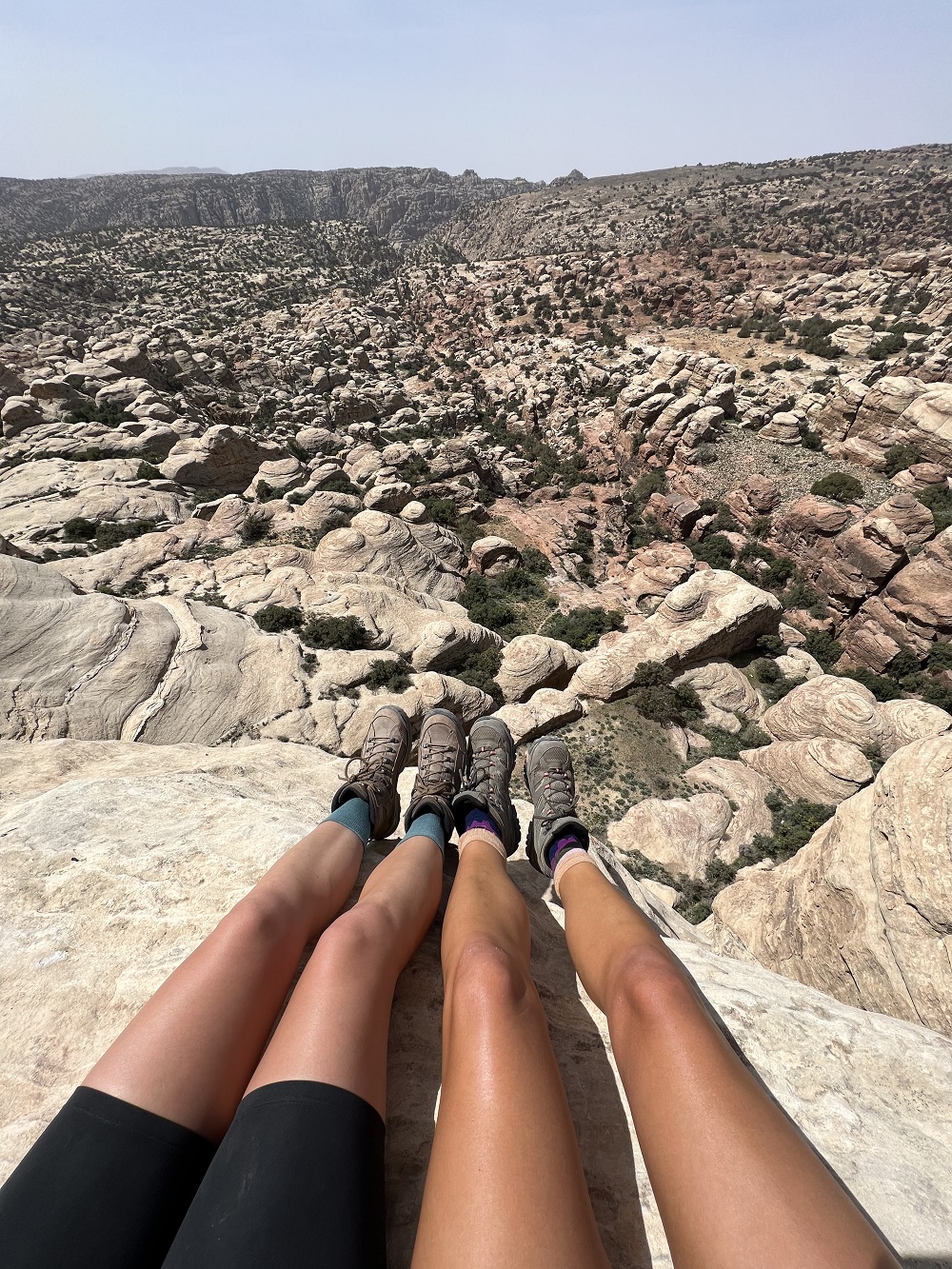
Dana Biosphere Reserve
If you’re looking for some of the most beautiful hiking trails in Jordan, then don’t miss Dana Biosphere Reserve. Dana is the largest protected nature reserve in Jordan at 320 square kilometres. It is home to rare plants and animals, and due to its size and variation in altitude it covers four geographical zones – each with their own unique climate. This wild, rugged and picturesque location is overlooked by most travellers, which means you often have the trails to yourself. There are numerous established hikes in the reserve, with the most famous being the Wadi Ghuweir and Wadi Dana trails. Accommodation is limited with three main options available: Rummana Campsite, Feynan Ecolodge and Dana Guesthouse.
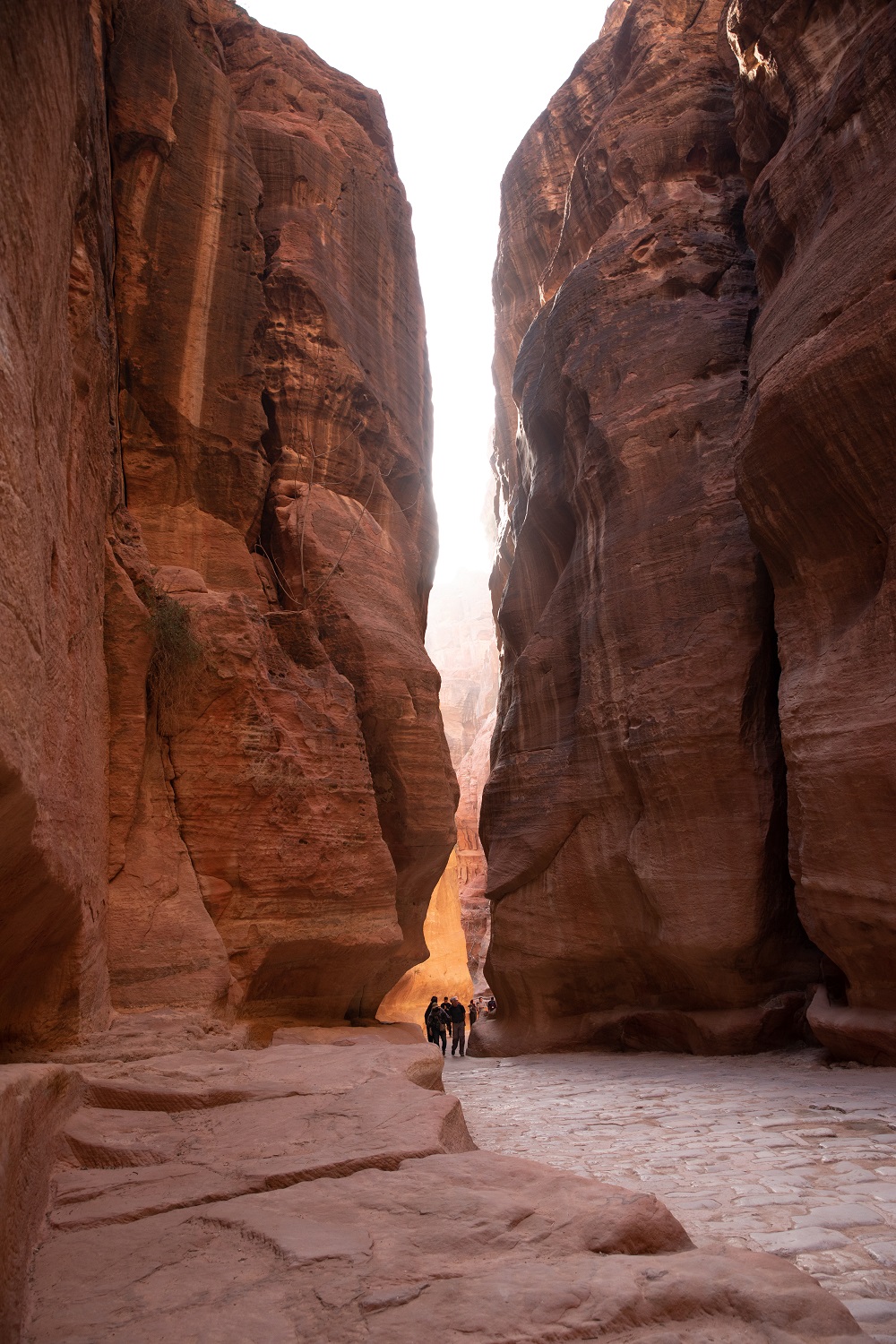
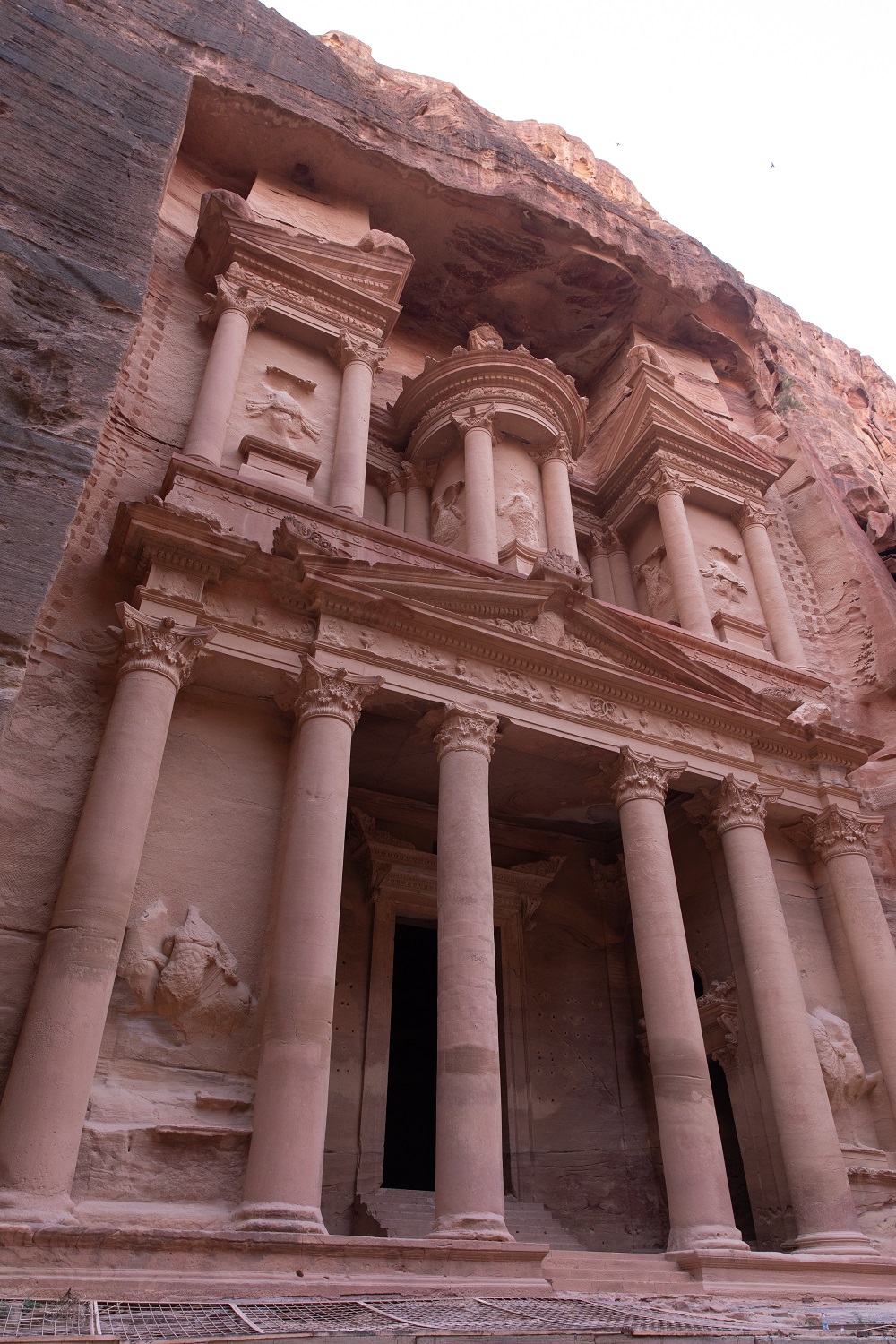
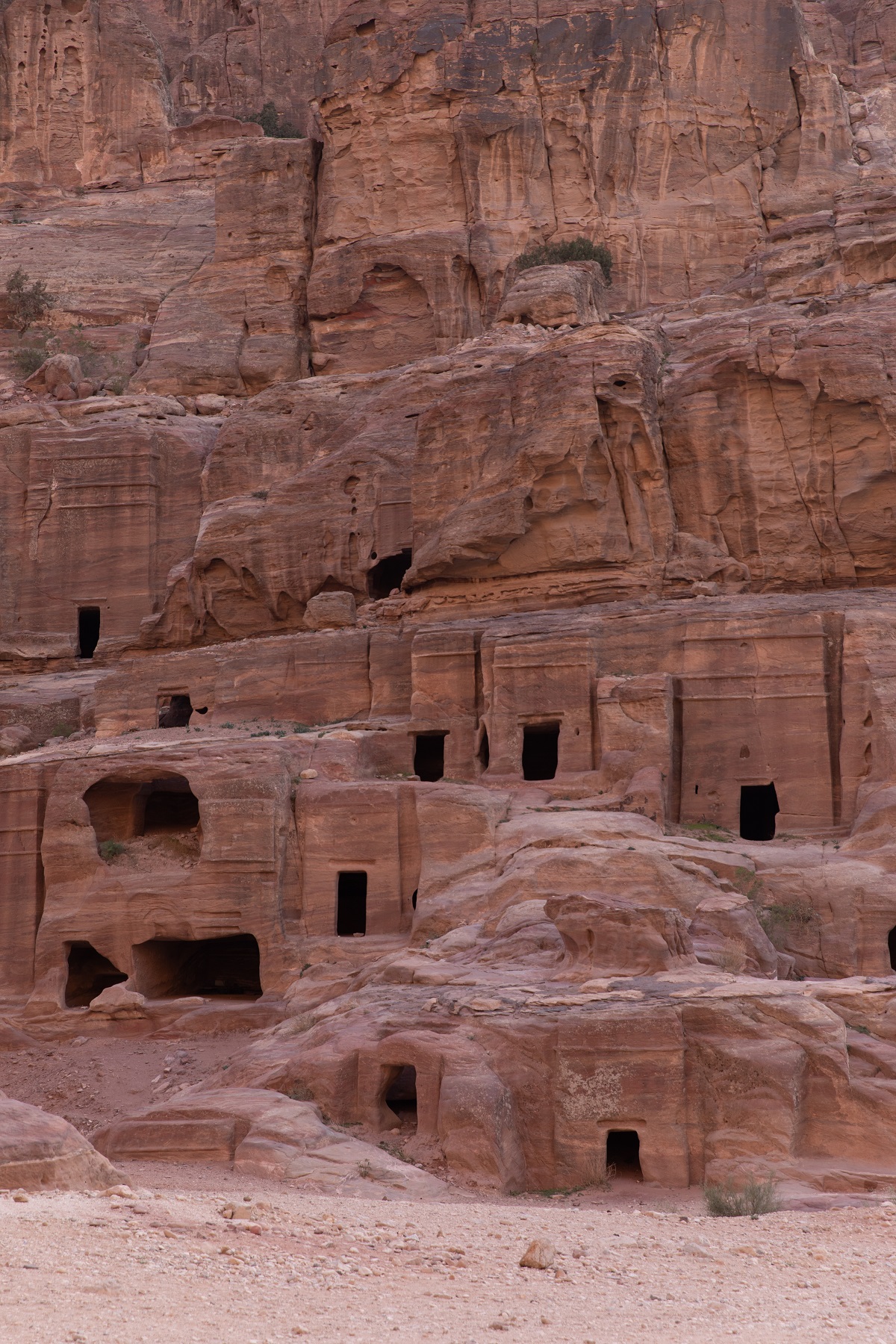
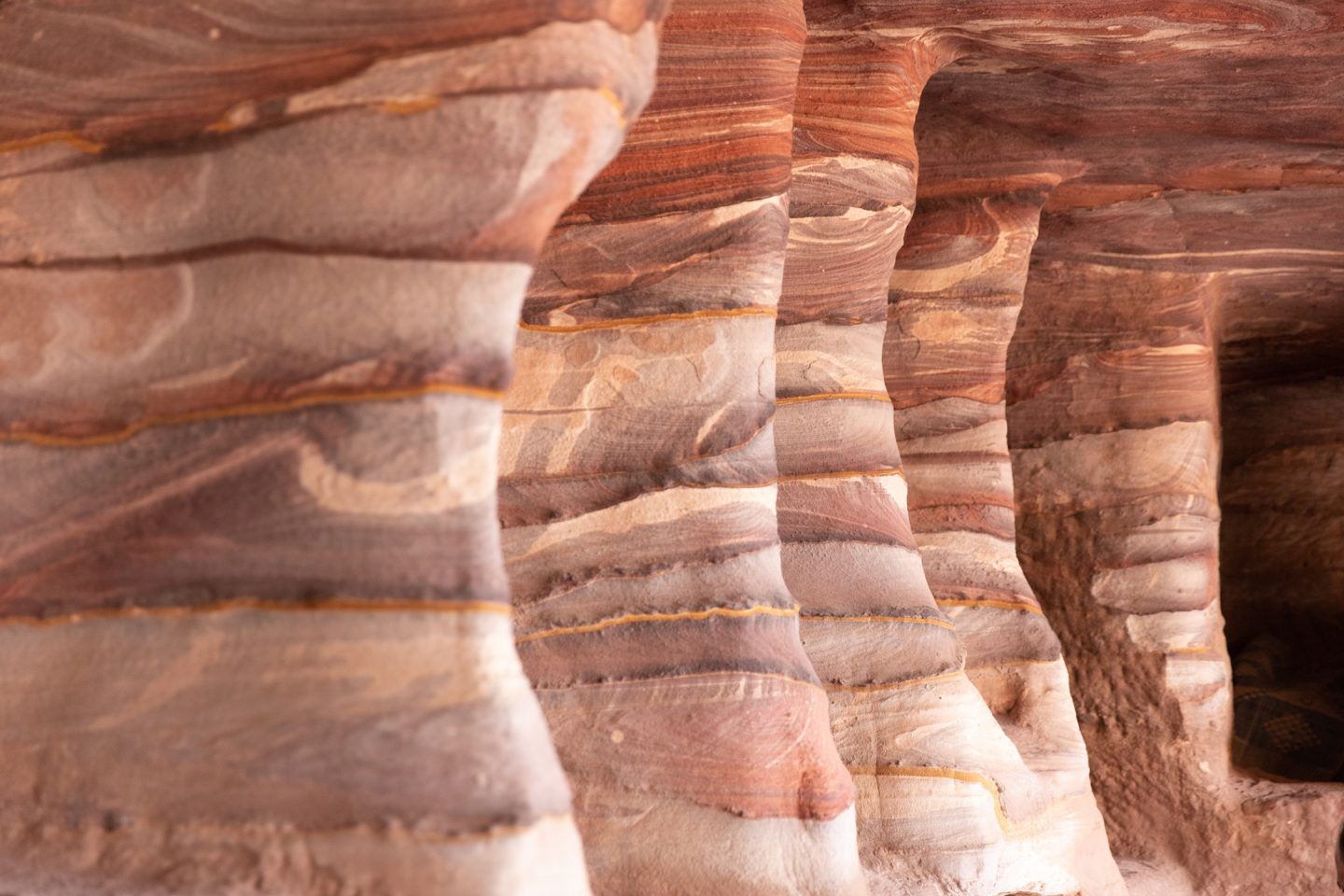
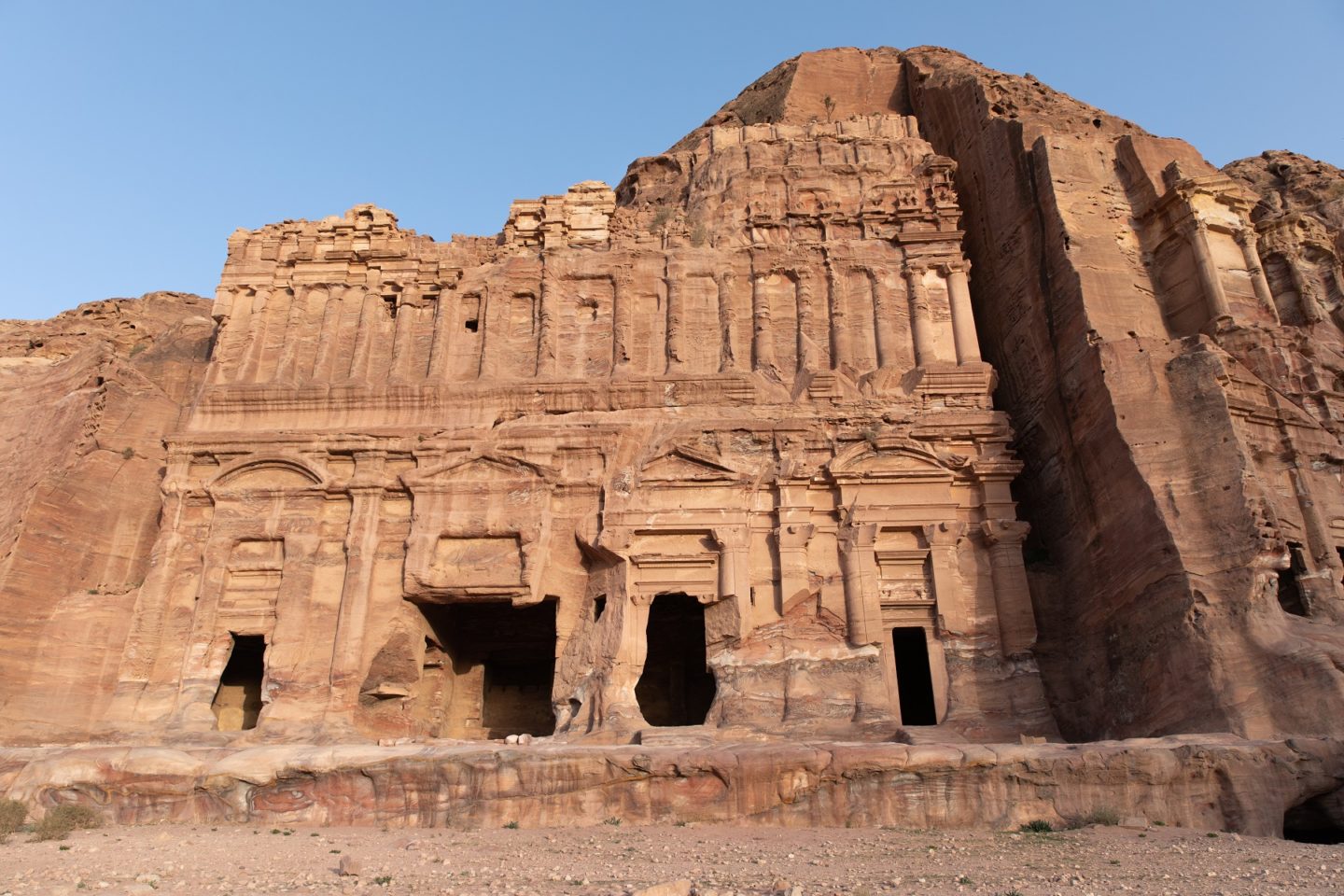
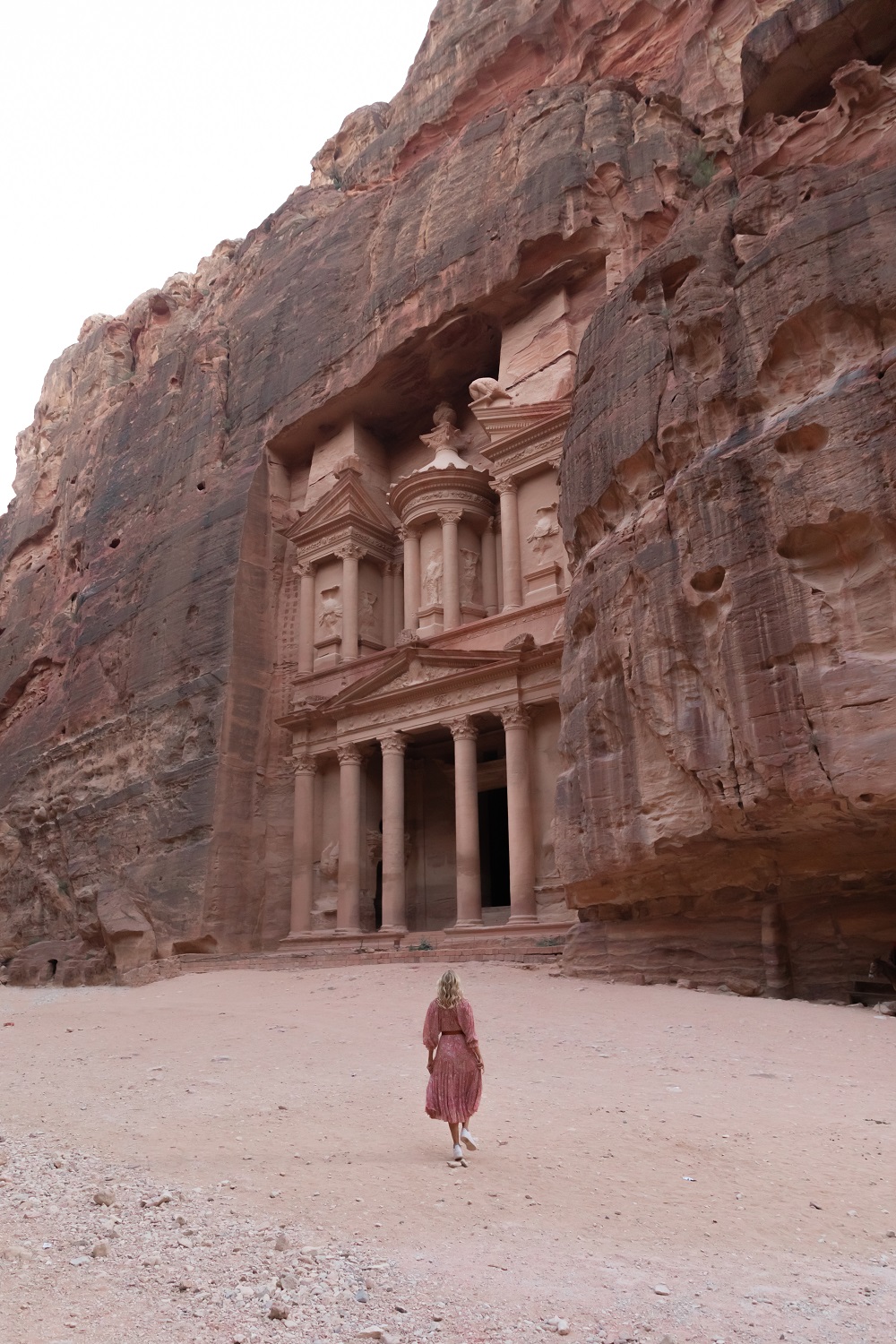
Petra
If there is one location you have to visit while in Jordan, it is Petra – the jewel in Jordan’s crown. Dating back to around 300 BC, Petra was the capital of the Nabataean Kingdom and is listed as one of the seven new wonders of the world! The lost city is hidden in the depths of the mountains around Wadi Musa and is comprised of an impressive series of tombs and dwellings carved directly into red sandstone rock faces.
It is hard to explain how it feels when you emerge from the Siq and first see the facade of the famous Petra Treasury. I was completely overwhelmed by its size, intricacy and beauty. However, there is so much more to see in Petra than the Treasury alone. The city covers over 50 square kilometres so for the best experience I recommend you spend at least two days there and split them like so:
Day 1:
Enter Petra from the main visitors centre, purchasing a two day pass (take photo ID to do this). Get a local guide to show you around the key ruins and explain the history of the city. If you’re feeling energised, hike up to the High Place of Sacrifice for views over the Petra Basin.
Day 2:
Do the 12km hike from Little Petra (aka “the back door to Petra”), past goat herds and Bedouin campsites to the Monastery – my personal favourite facade in the city. Continue your hike down the 1000 steps and into the Petra Basin. Use this day to experience Petra in more depth, taking in lesser known sites such as the Royal Tombs, The Arched Gate and the Byzantine Church. Petra is the gift that keeps on giving – the more you explore, the more you will discover.
Tips: Visit when Petra first opens or stay until it closes to enjoy it without the crowds. Petra by night is a popular activity, but personally I found it to be overpriced and disappointing, I would not recommend it.
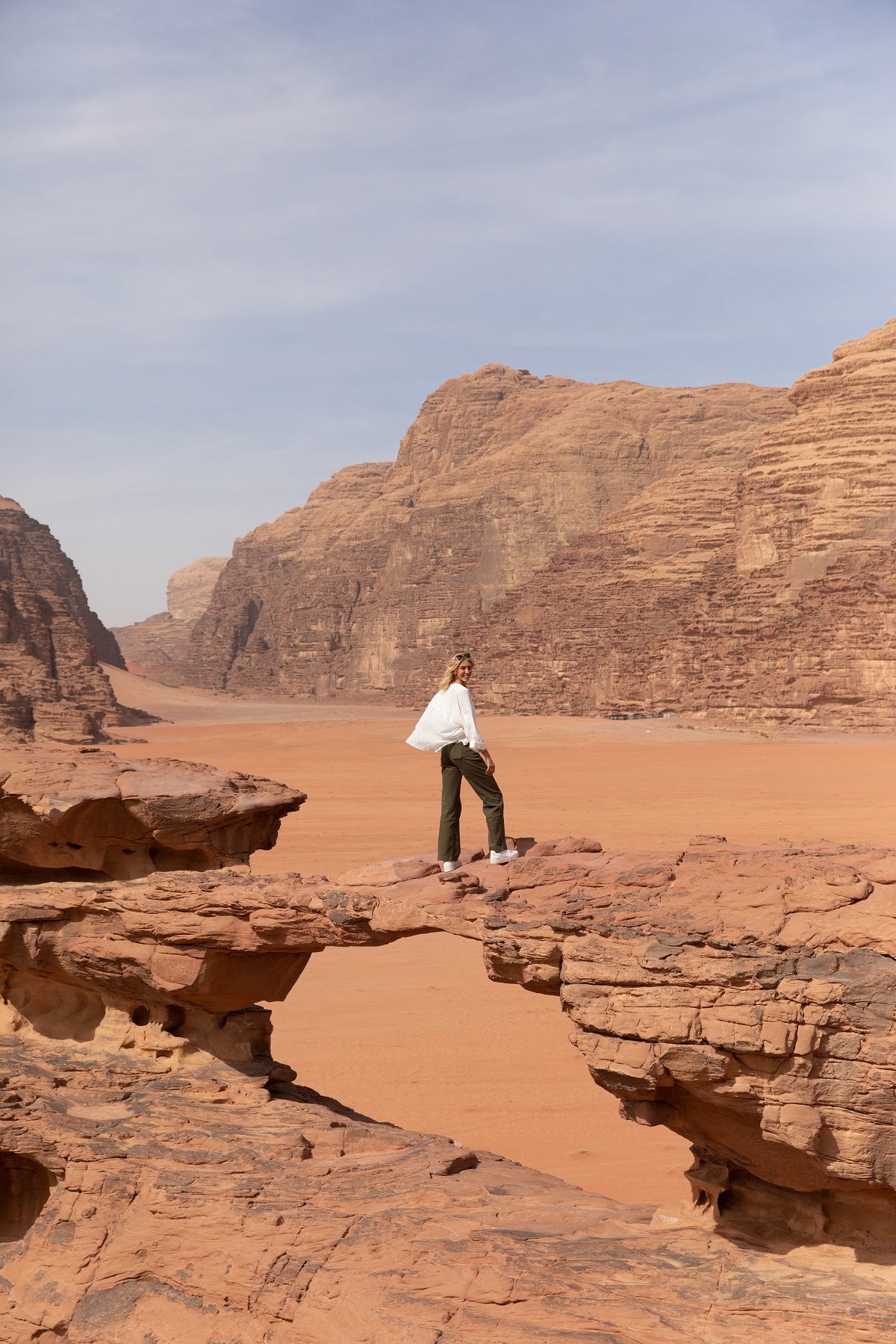
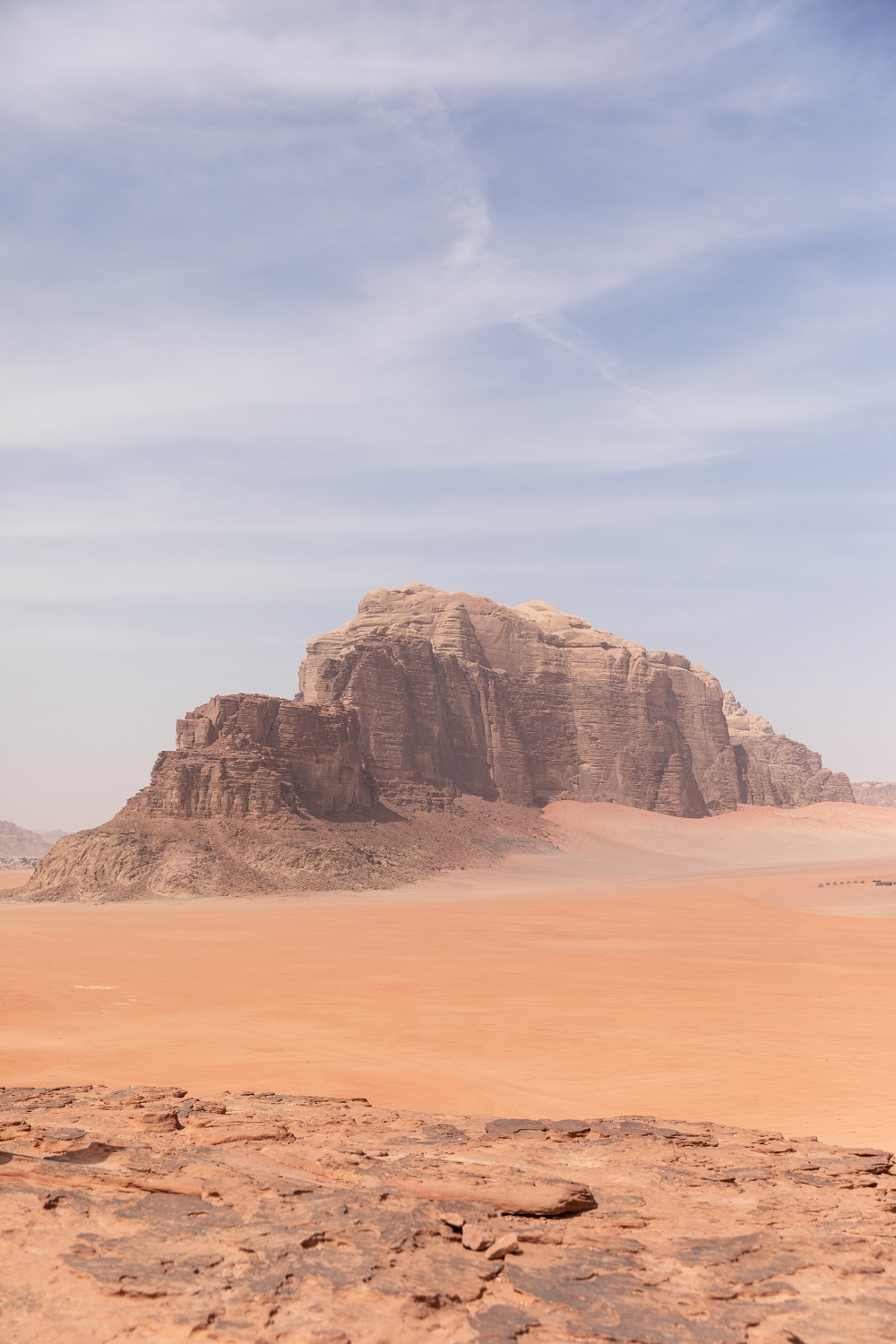
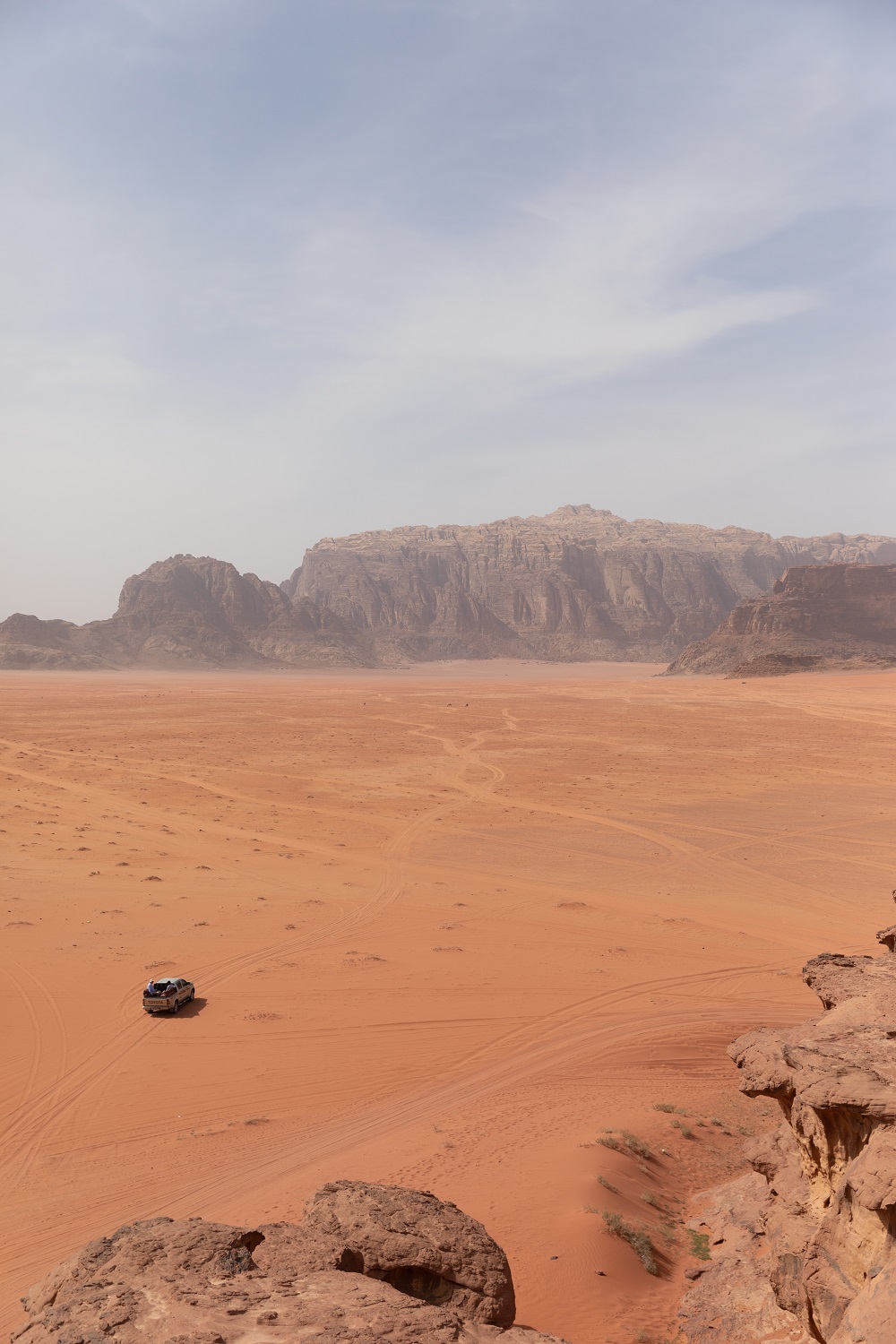
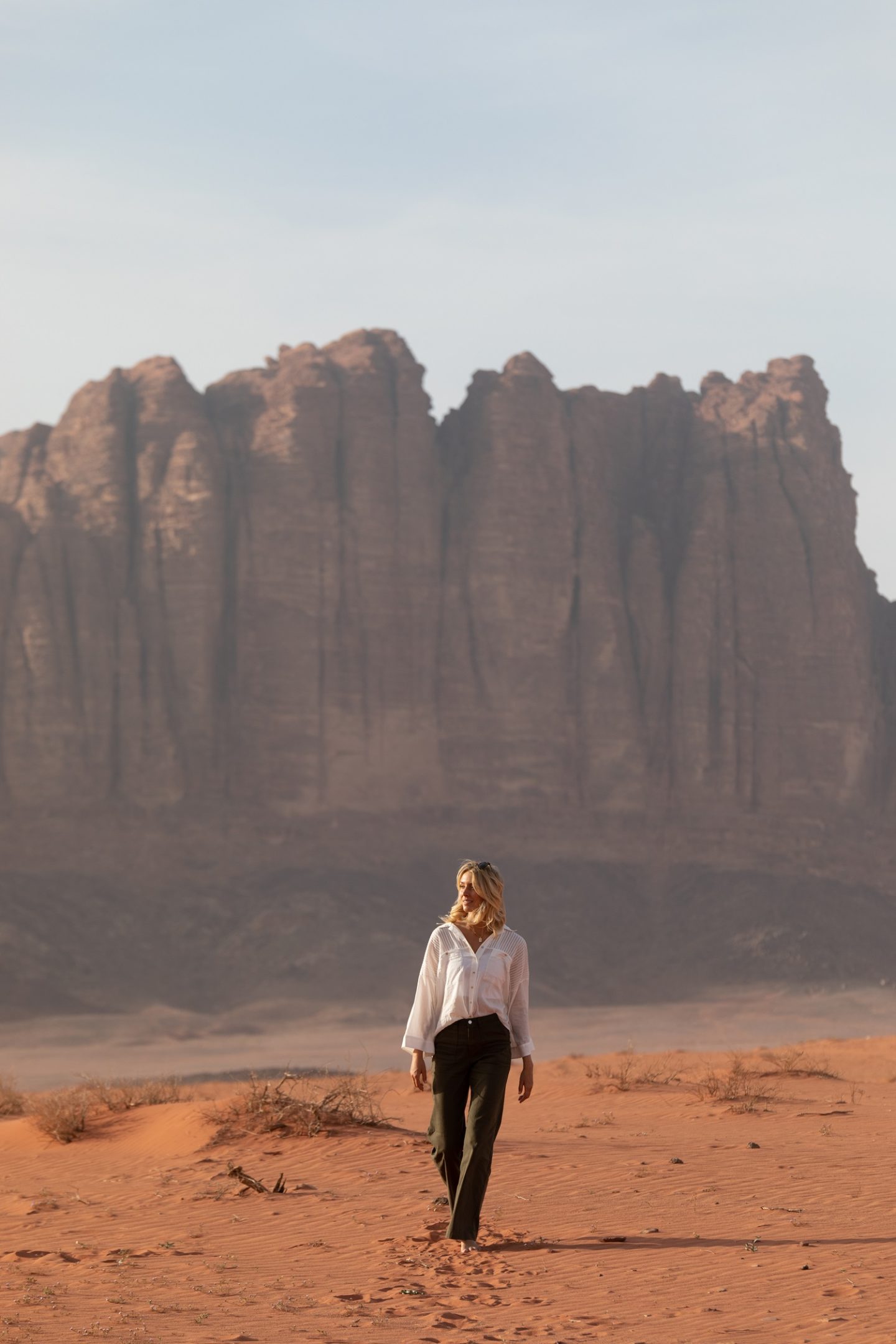
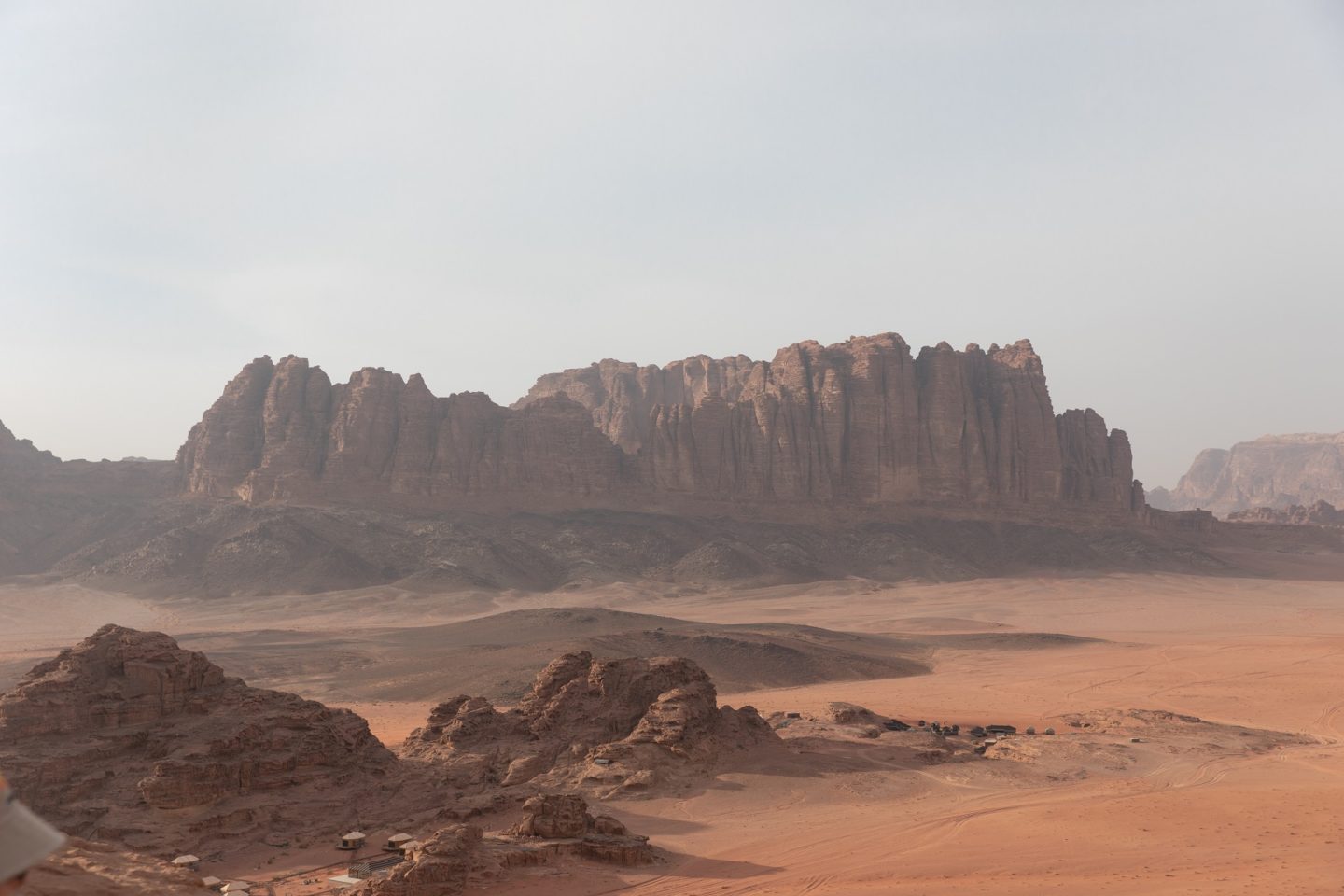
Wadi Rum
The Wadi Rum desert is a designated UNESCO world heritage site and was one of my personal Jordan highlights. It is home to incredible lunar landscapes, towering red dunes and rugged sandstone mountains. It is like nothing I have seen before, the burnt orange terrain quite literally makes you feel like you’re on Mars. Which explains why it has been used as a location in numerous Hollywood movies including The Martian and Dune.
Wadi Rum is home to nomadic Bedouin tribes. For the full authentic cultural experience I recommend spending a couple of nights at a traditional Bedouin camp. Self-exploration is not encouraged in Wadi Rum so choose a camp that offers tour guides. There are a selection of local activities available including 4×4 jeep tours, rock climbing, hiking and quad bike treks. Enjoy a delicious dinner cooked in an earthen oven (buried in the sand) by your Bedouin hosts. Climb up one of the sandstone mountains near your camp and watch the most incredible sunrises and sunsets. At night, be sure to look up and enjoy the star filled sky. It shines bright due to the lack of light pollution in the region.
Tips: Days are hot and nights are cold in the desert, so don’t forget layers for the evenings. Bring a headlamp if you’re staying in a camp. Bug spray is an essential.
Eat The Local Food:
The food in Jordan is absolutely delicious. I recommend eating at local cafes and restaurants, and ordering Arabic dishes for the best dining experience. Try the falafel, hummus, fresh Arabic salads, Bedouin tea, iced lemon and mint juice, maqulba (a one pot meal served upside down) and kanafeh (a dessert made from white cheese topped with crunchy pastry and syrup).
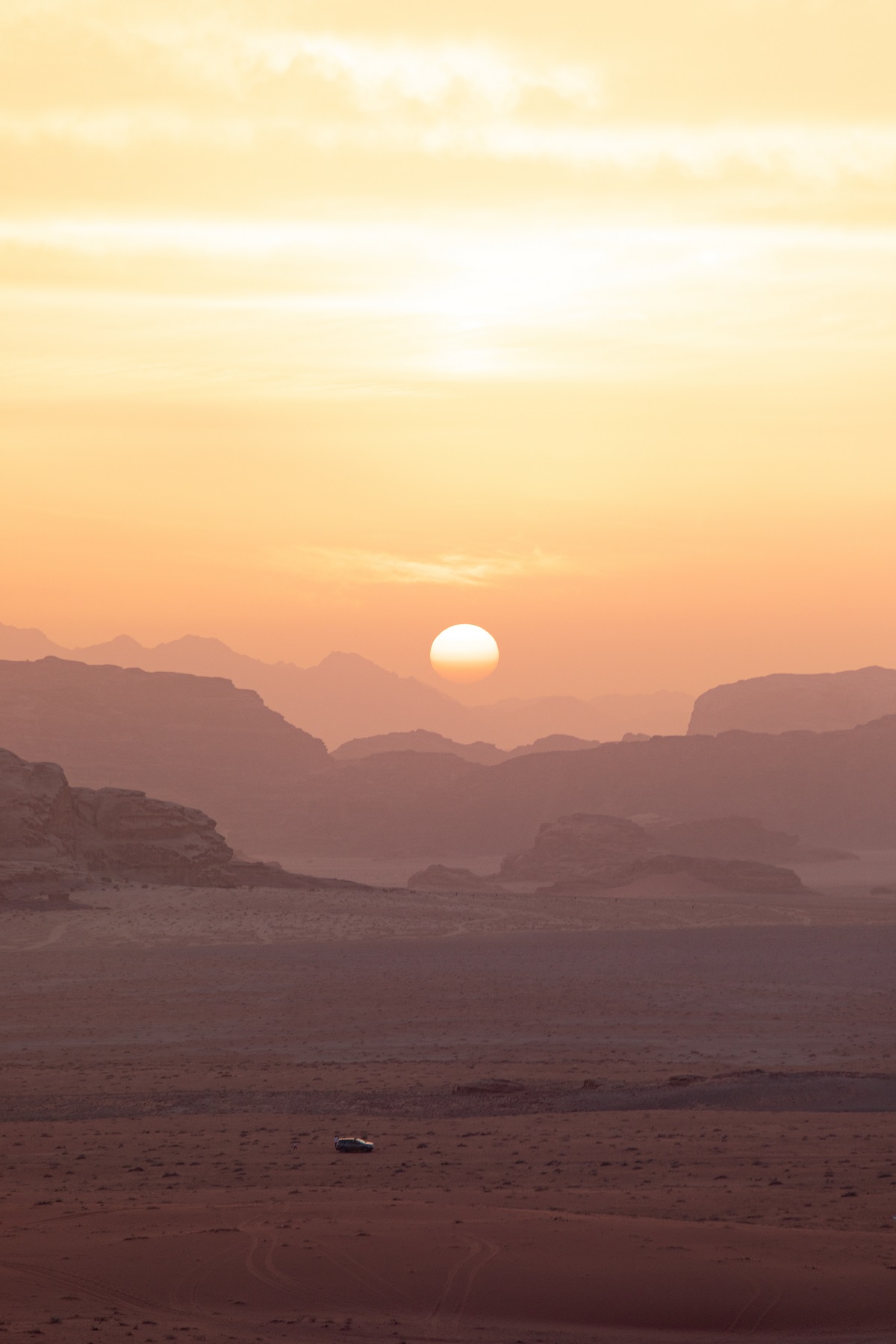
Extra Time?
If you can squeeze in an extra day or two, hit up these Jordan sights!
- Wadi Mujib. This narrow river canyon surrounded by towering mountains is located just off the Dead Sea highway. If you’re looking for an adventurous day, it is a great location to try canyoning and immerse yourself in nature. It is important to note that Wadi Mujib is only open between April and October.
- Aqaba. If you’re a keen scuba diver, stop off in Aqaba and experience the treasures of the Red Sea. Jordan has more than 20 recognised dive sites including wrecked ships, planes and even a tank!
- King Talal Dam. This dam is a 45 minute drive north of Amman and provides green landscapes for scenic hiking in the springtime. A great day trip from the capital!
Jordan is a destination which is perfect for active and adventurous travellers, with plenty of hiking trails to explore, adrenaline filled activities to try and historic sites to discover. Push it to the top of your bucket list, you won’t regret it!
Safe travels,
Zanna x
Did you find this post helpful? I’d love you to share it on pinterest for me.
Hover on image, pin and save this blog post for later…

If you are looking for inspiration for great hikes in the UK and beyond, take a look at my hiking pages.

